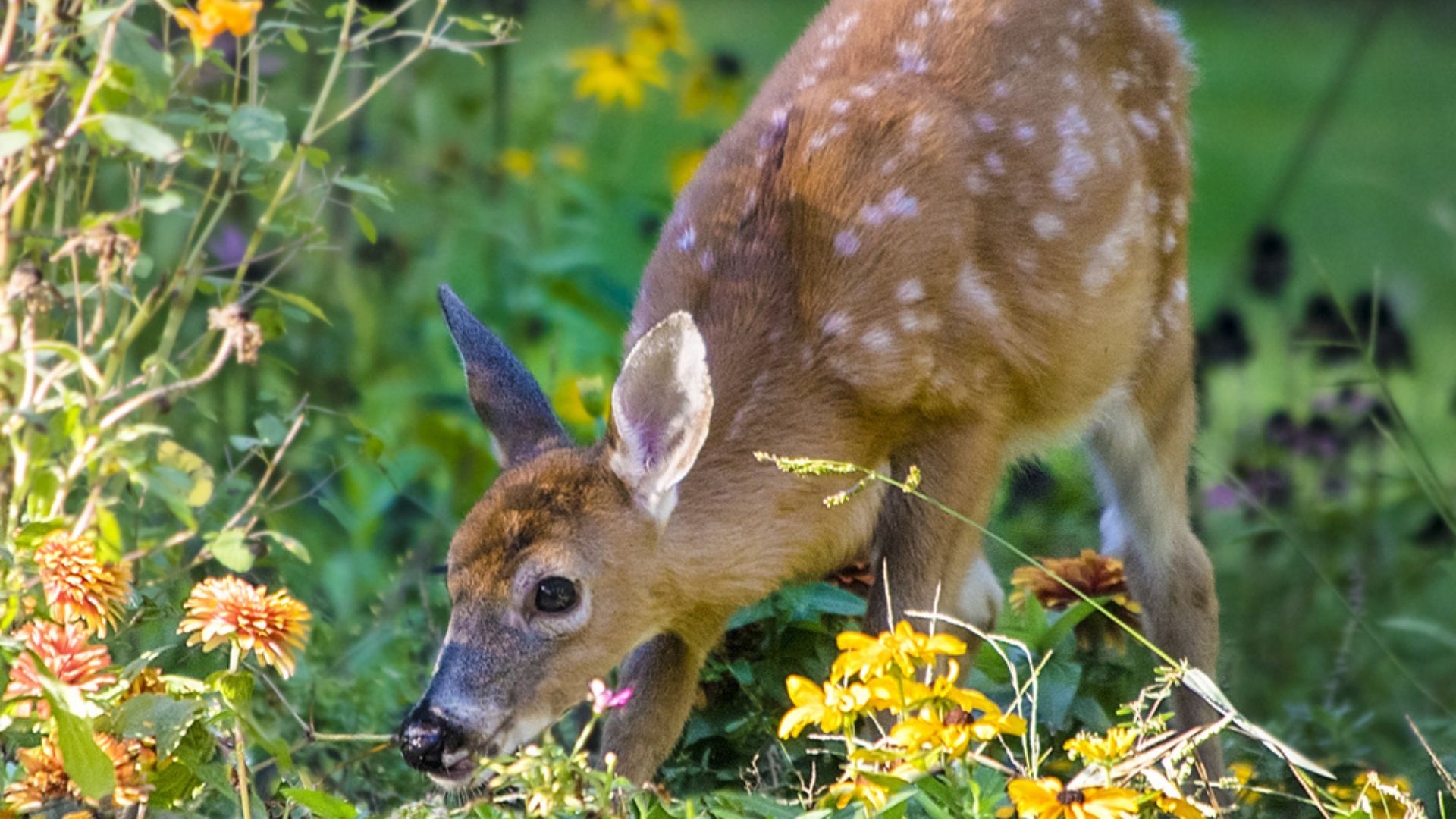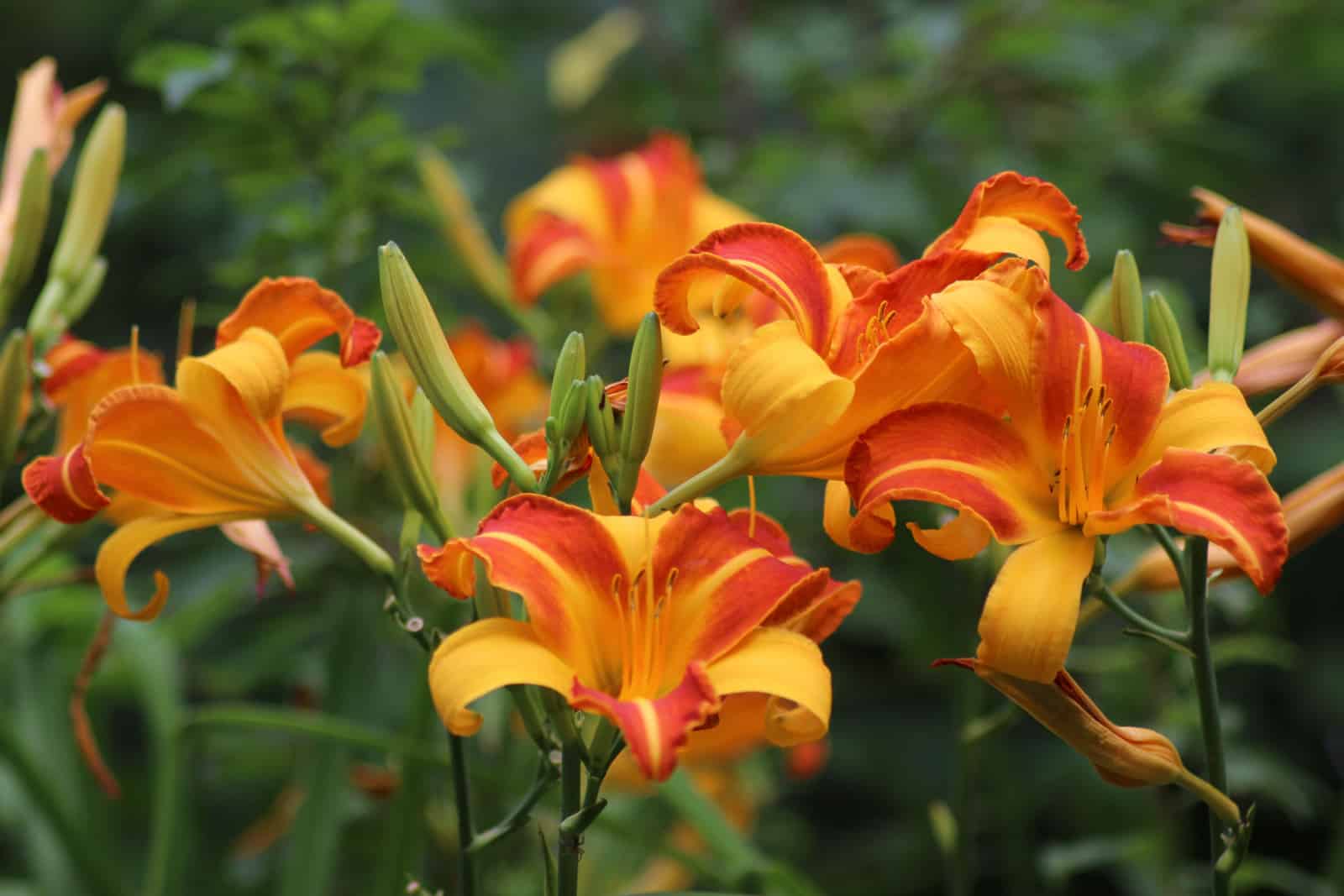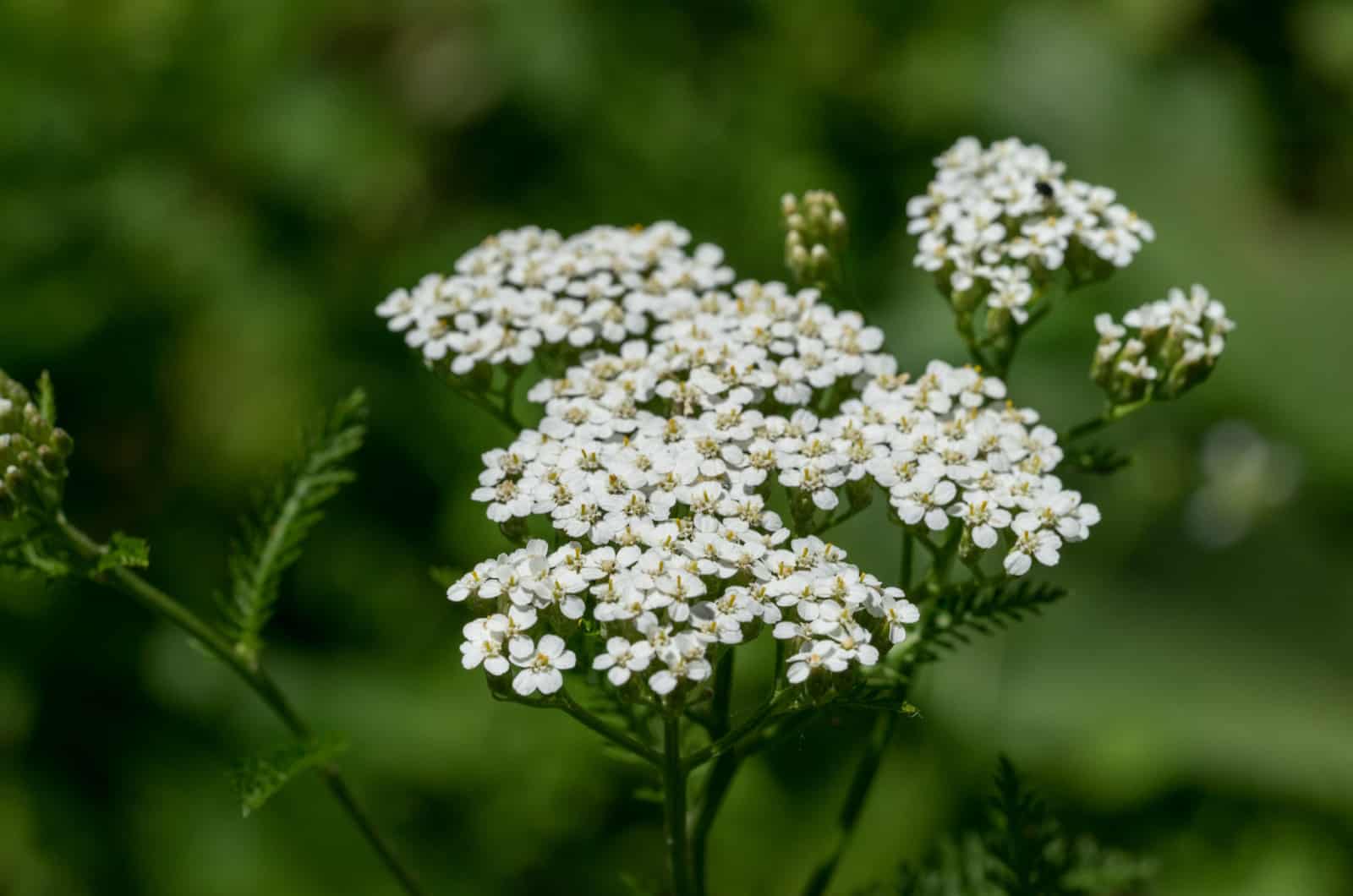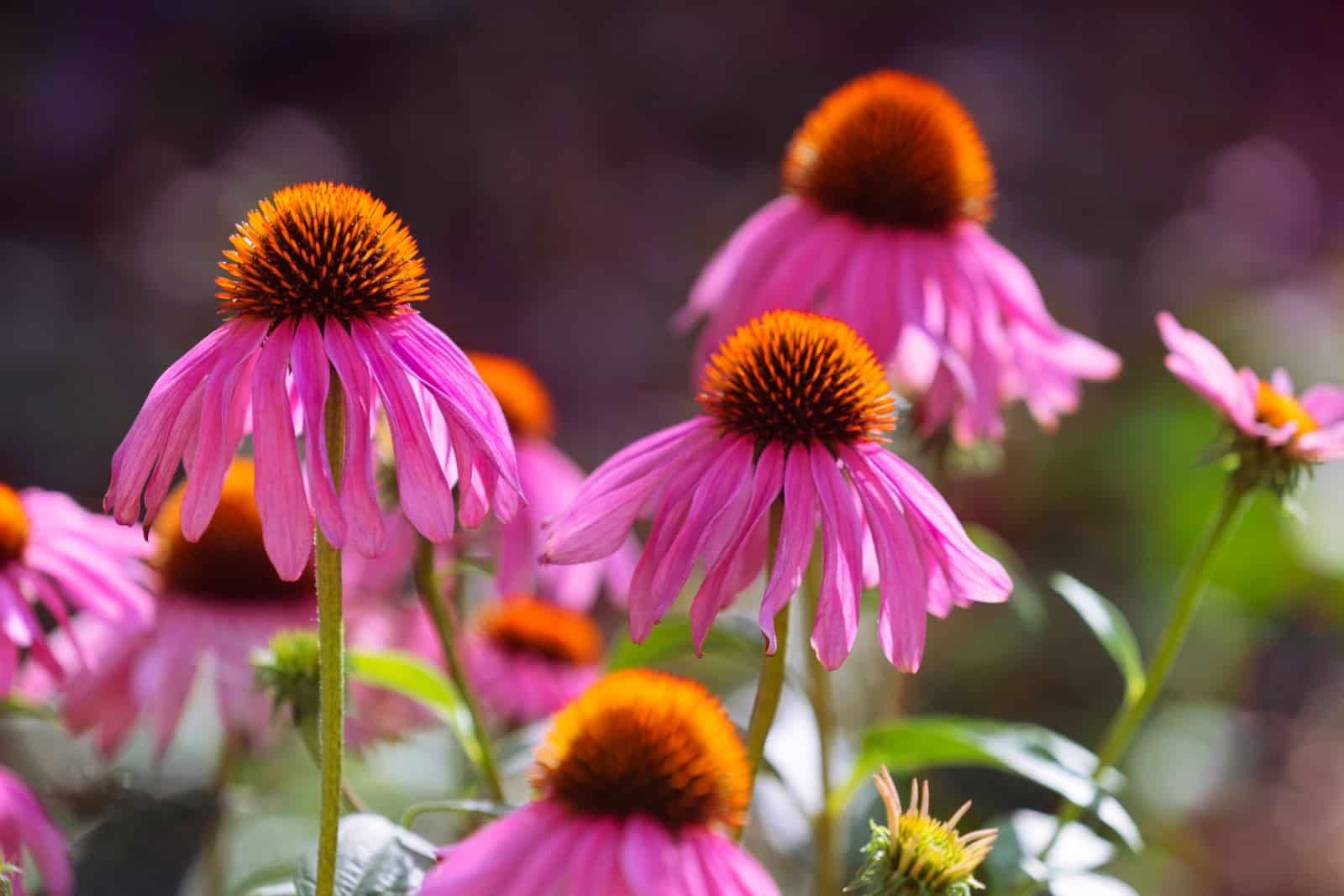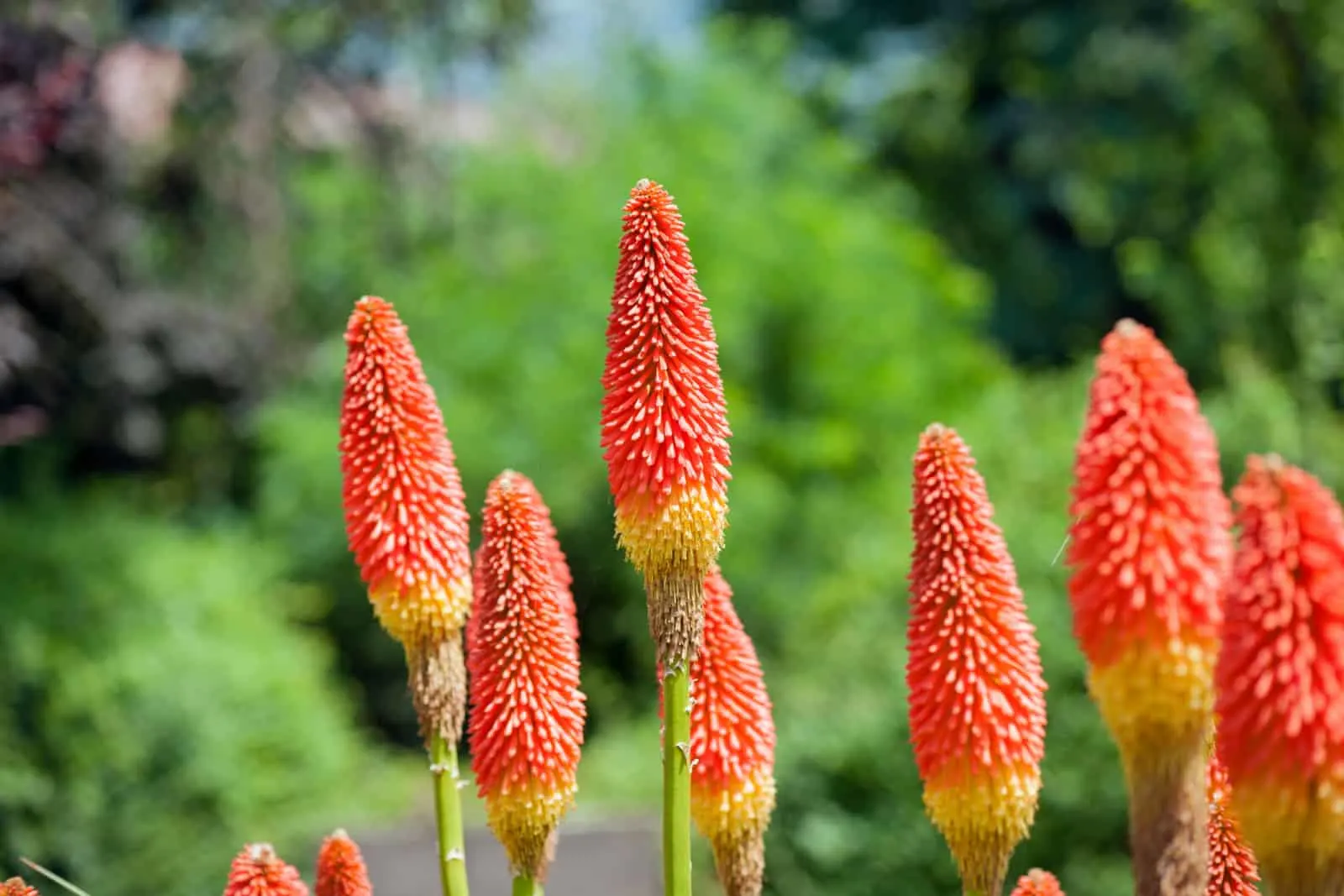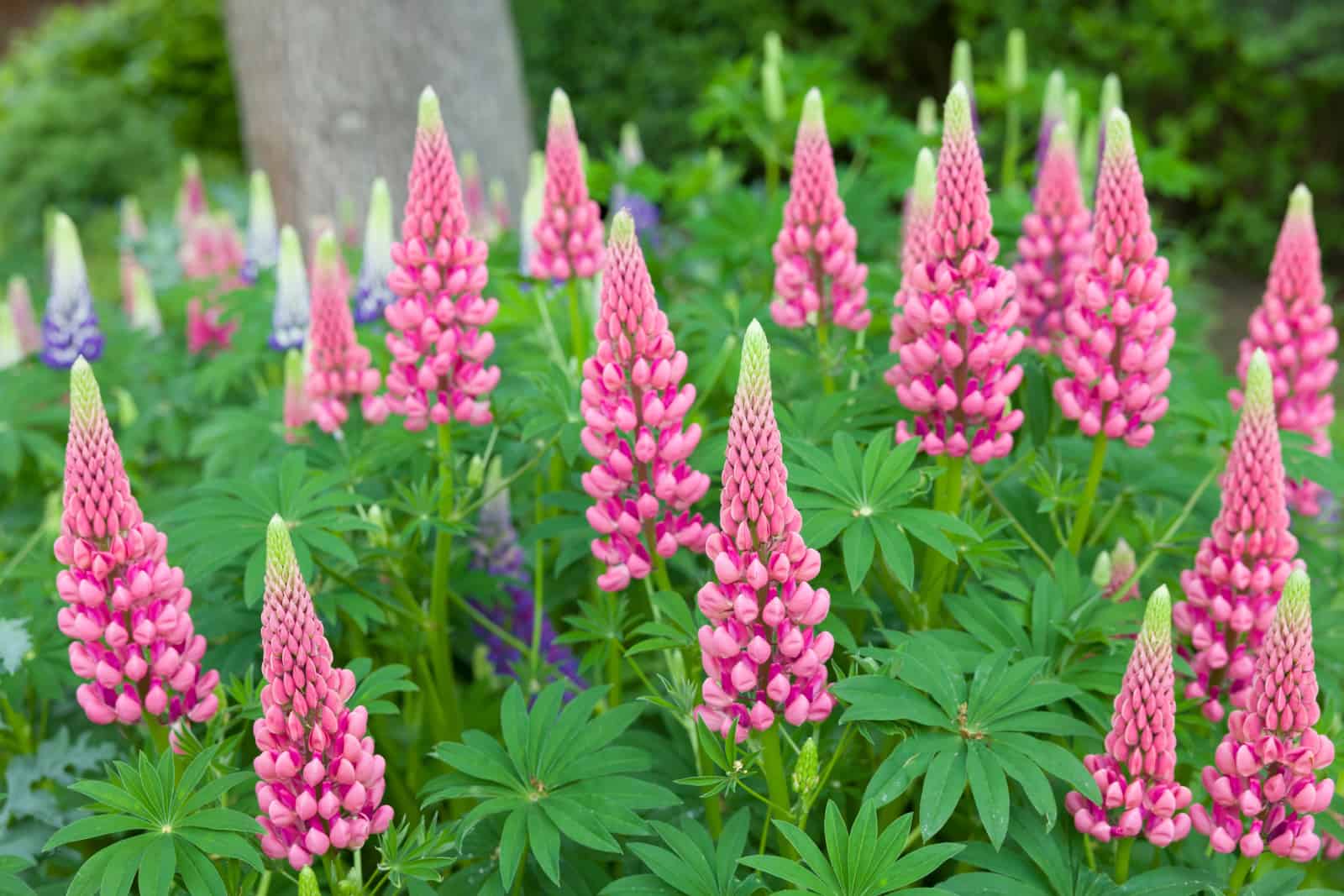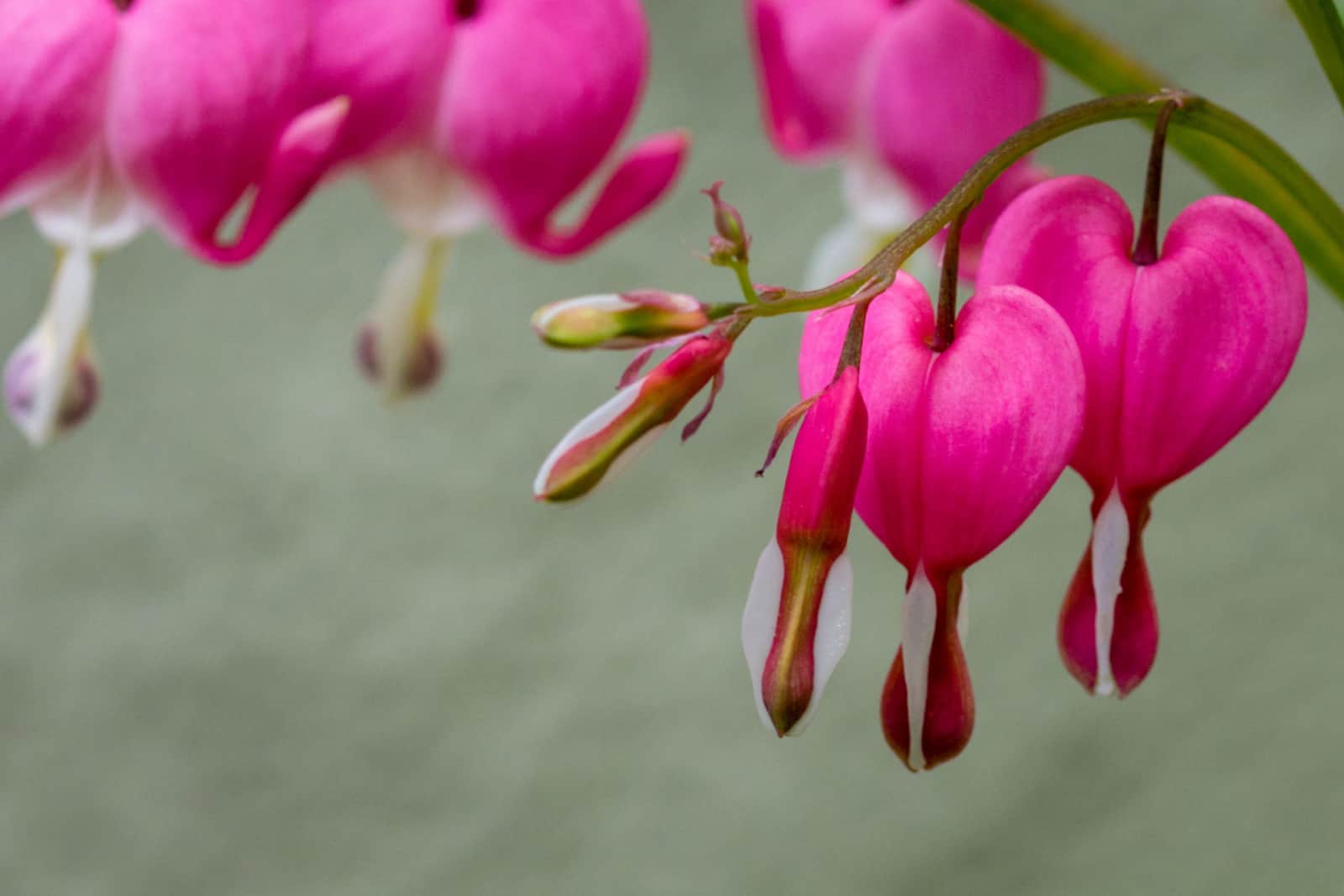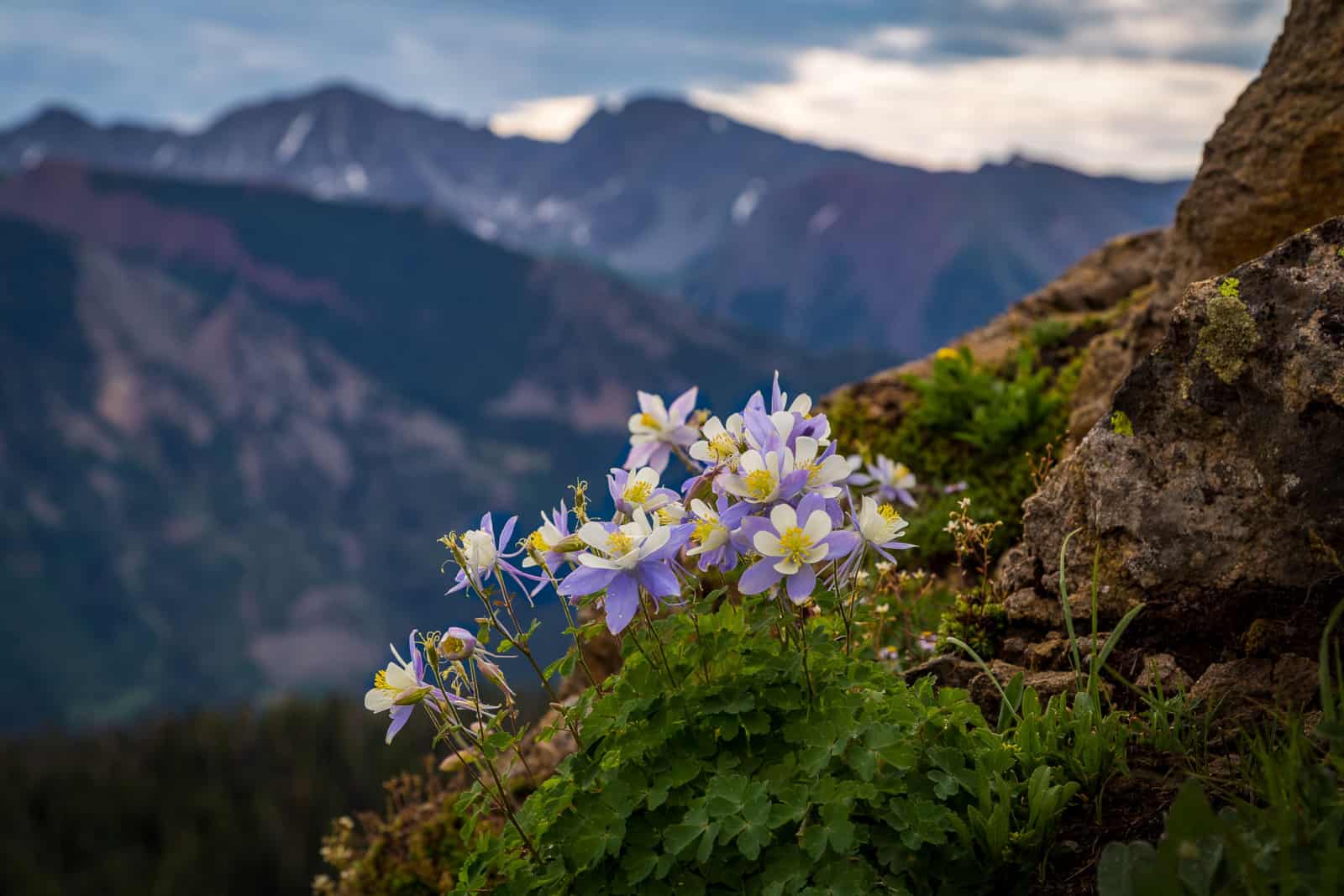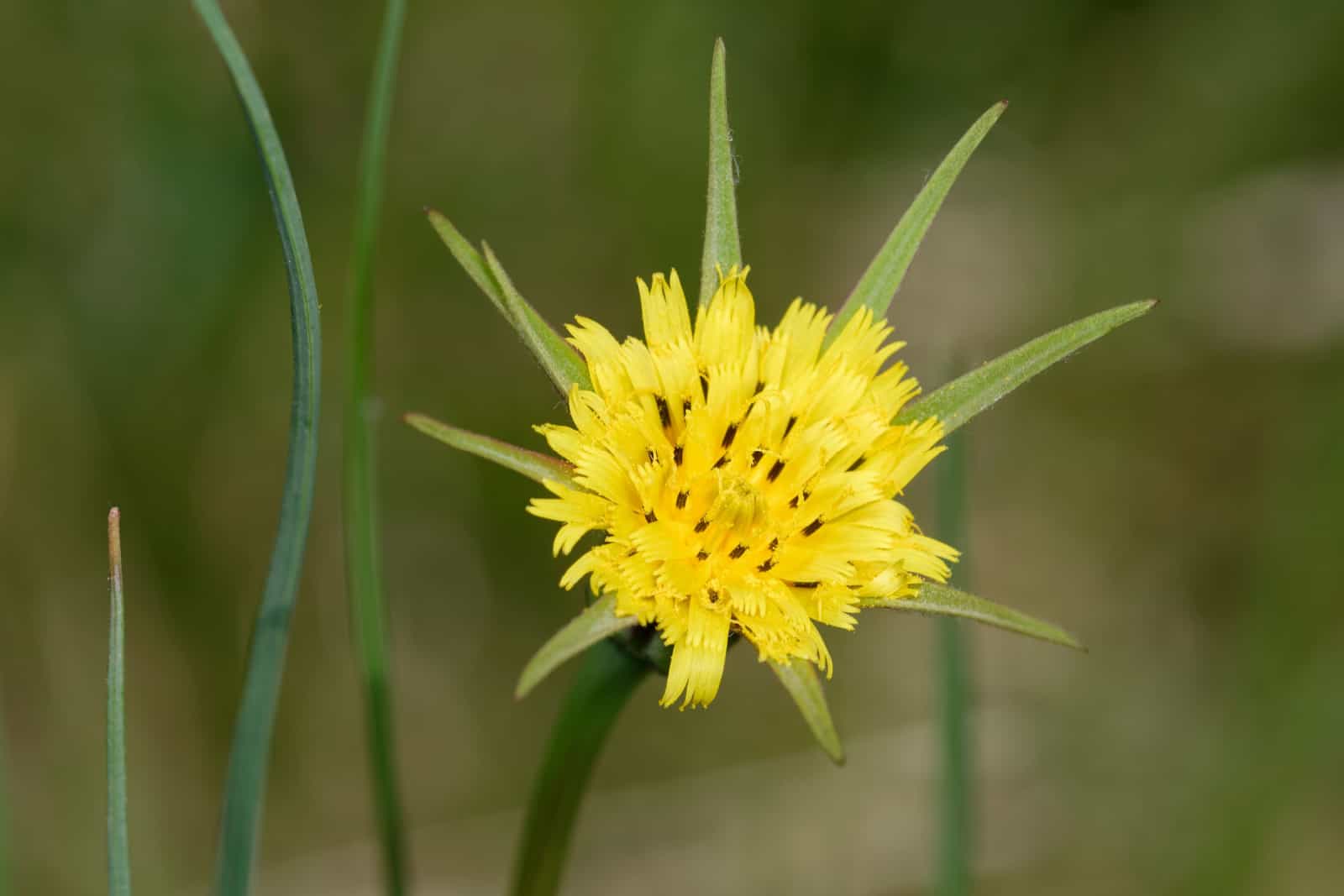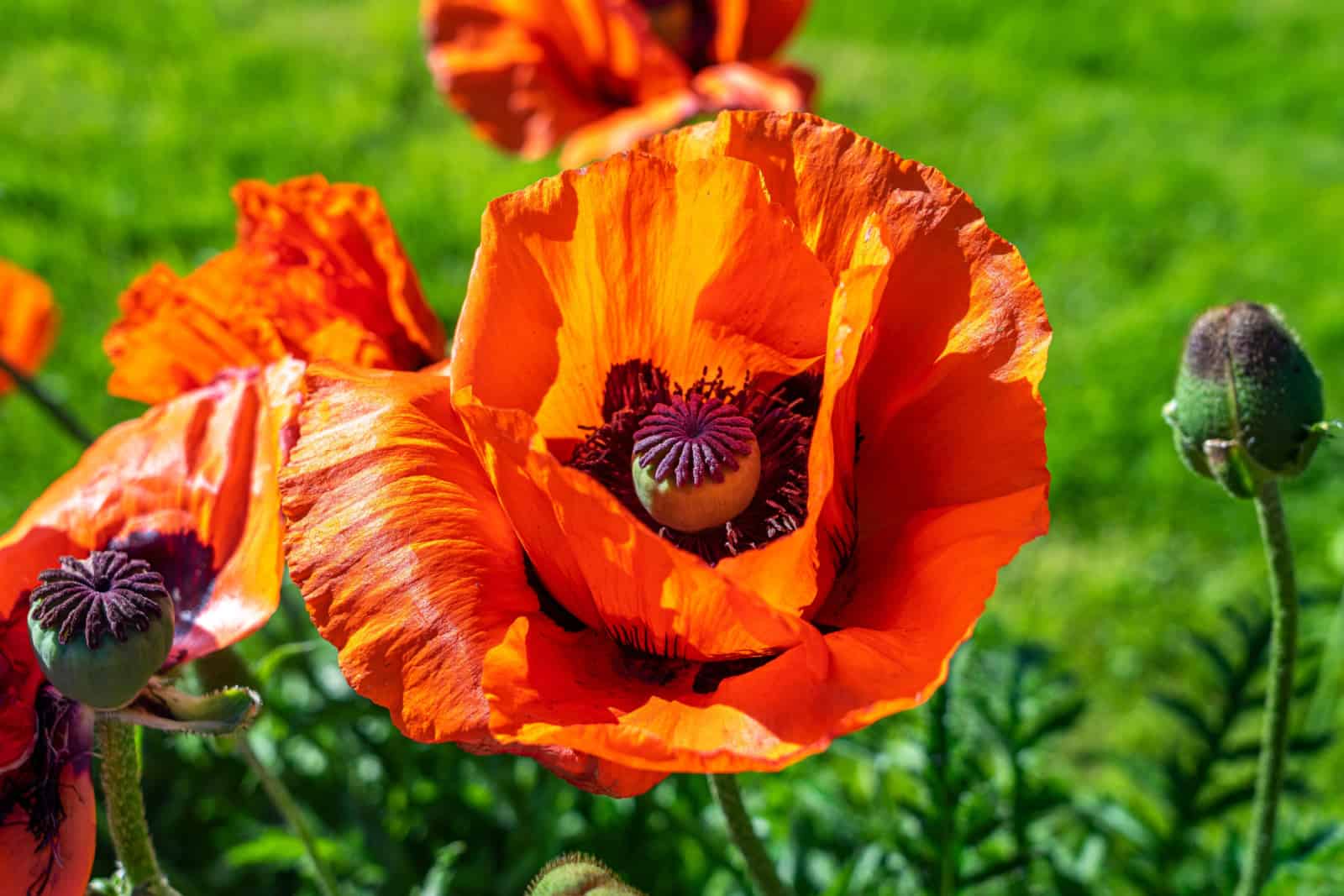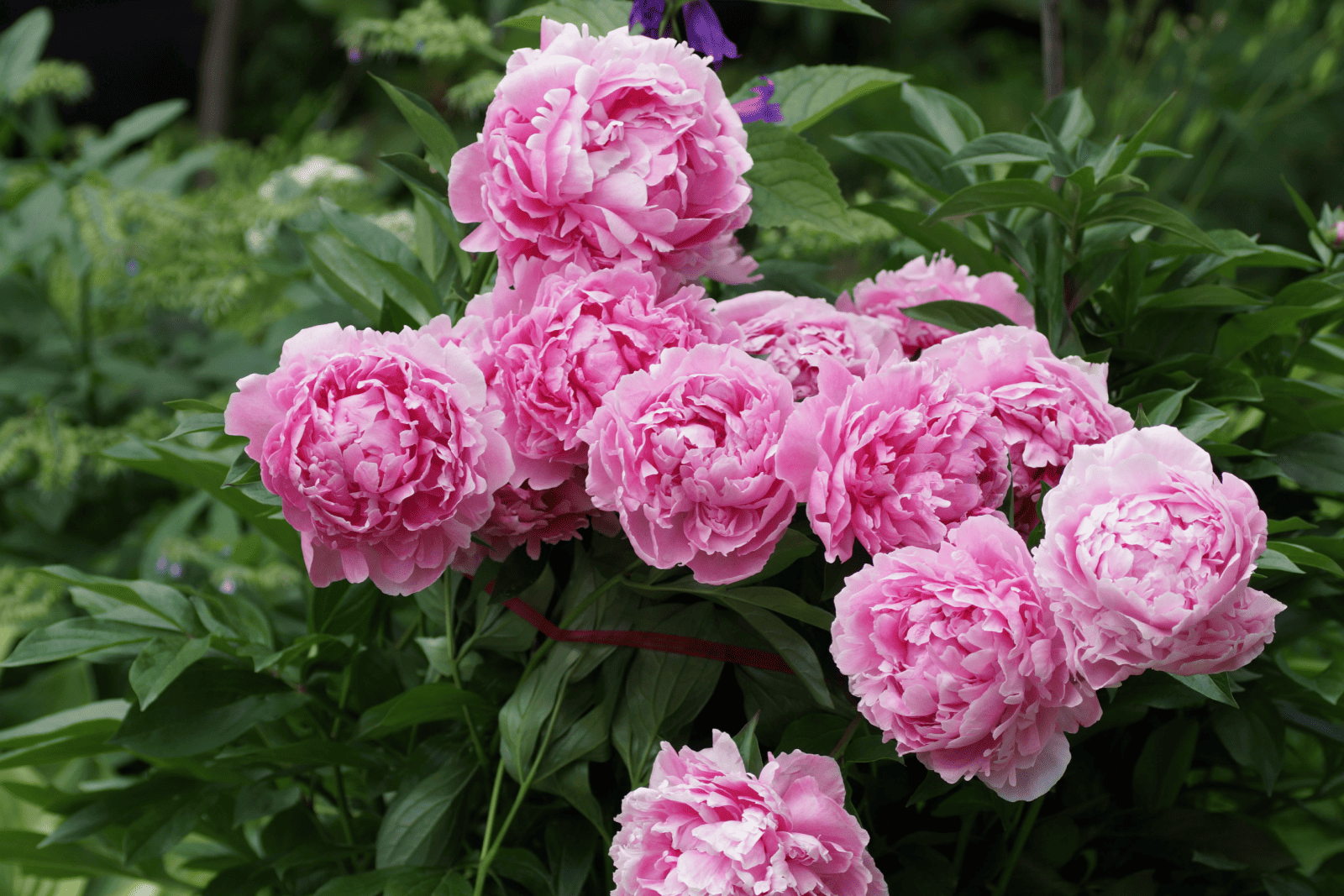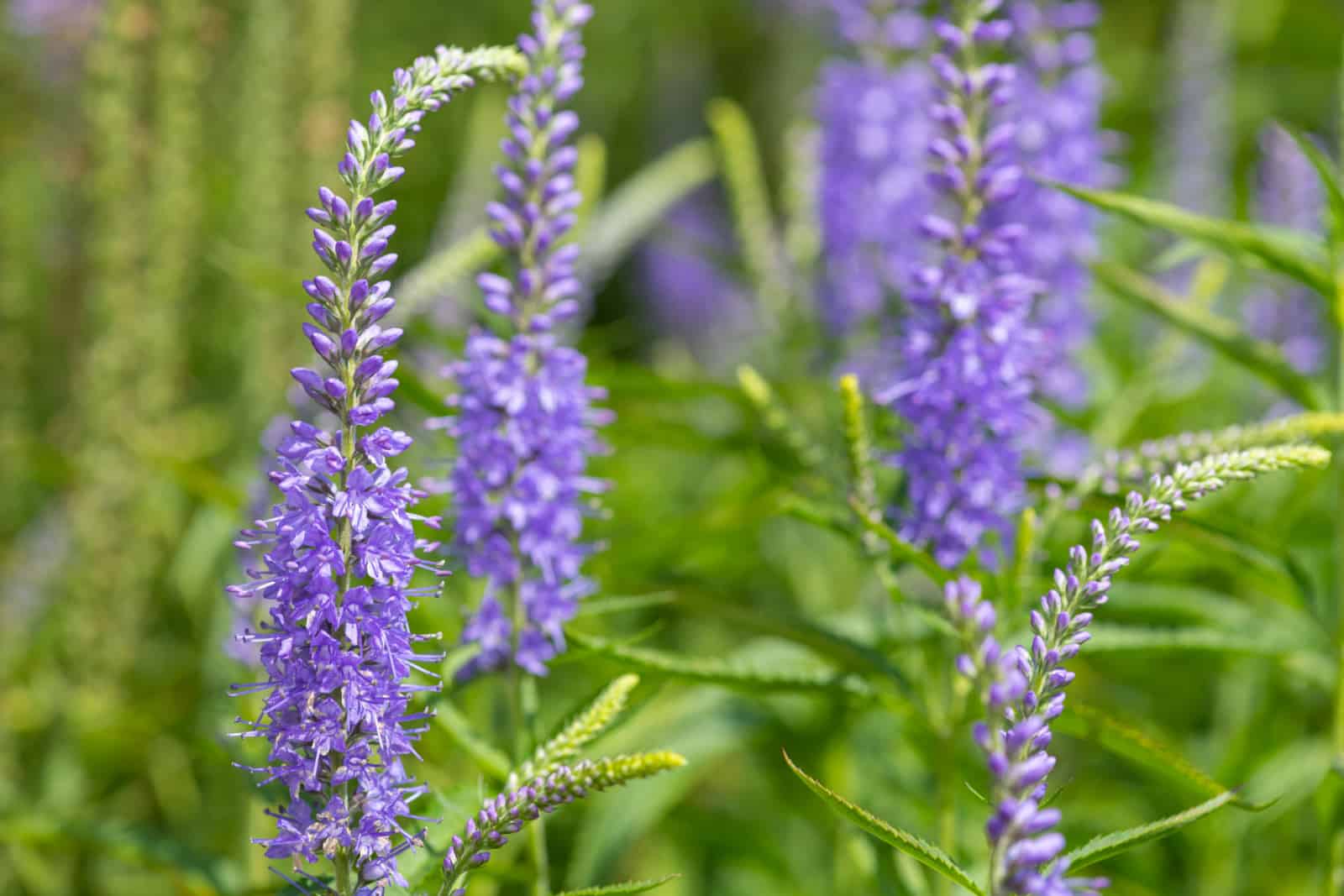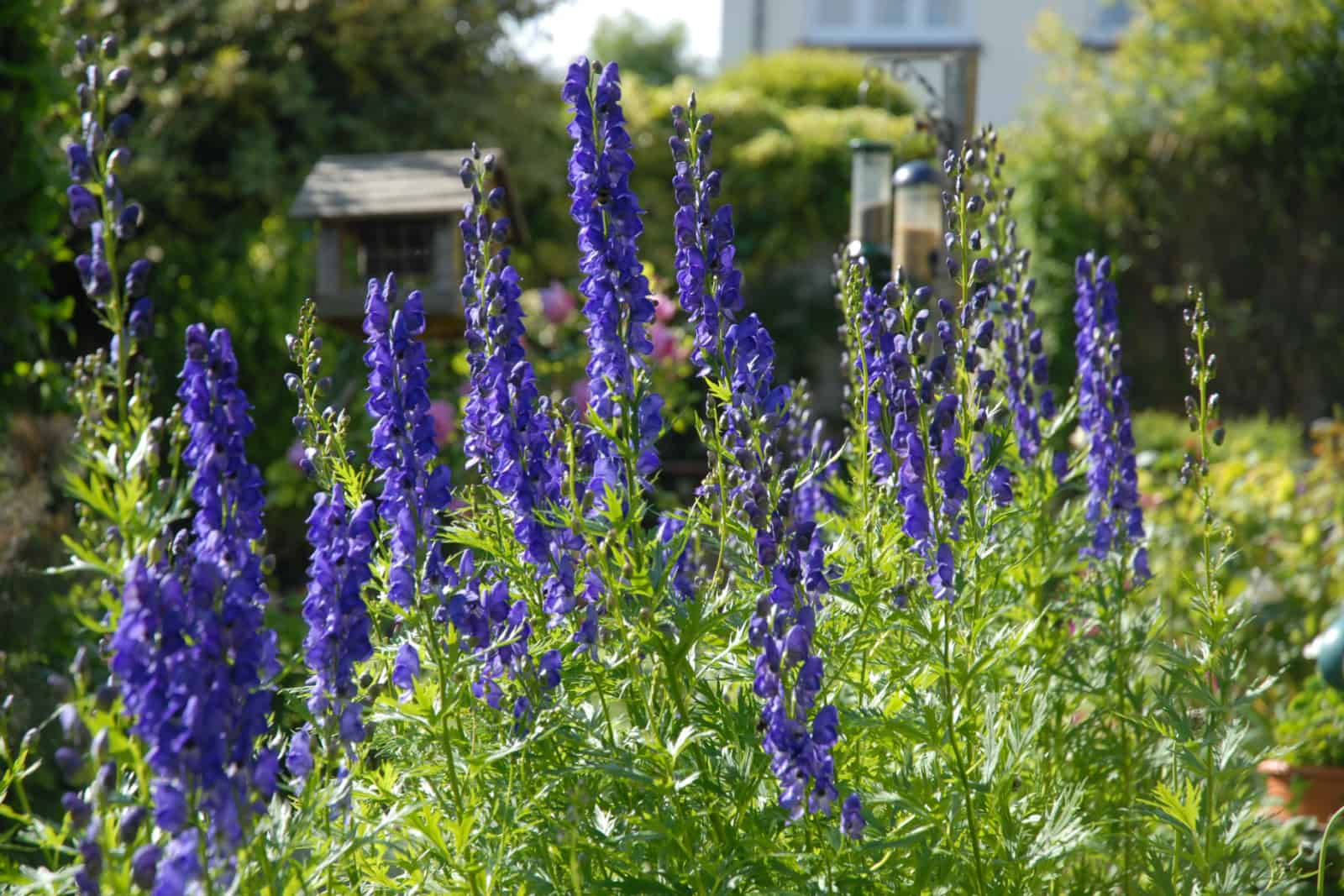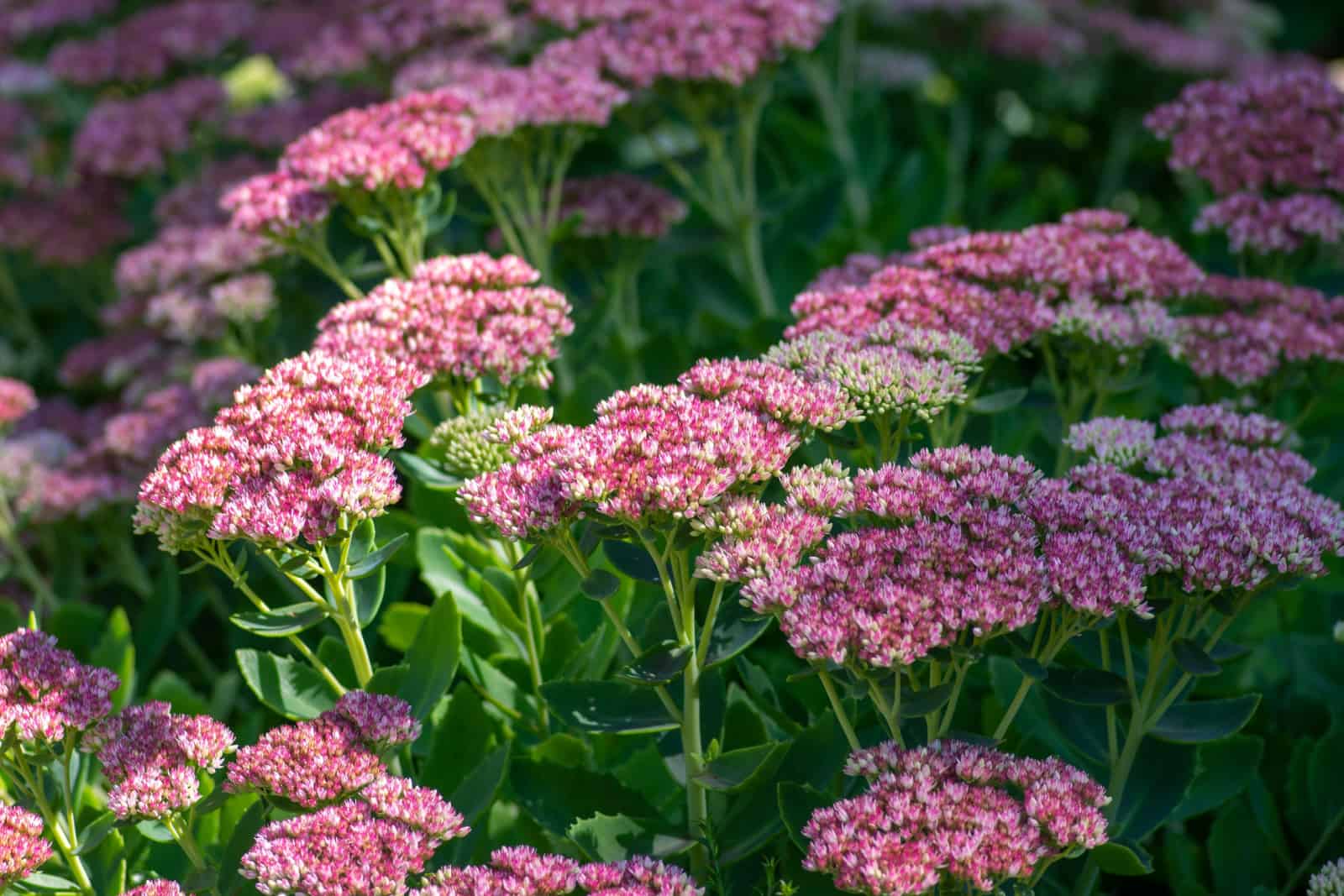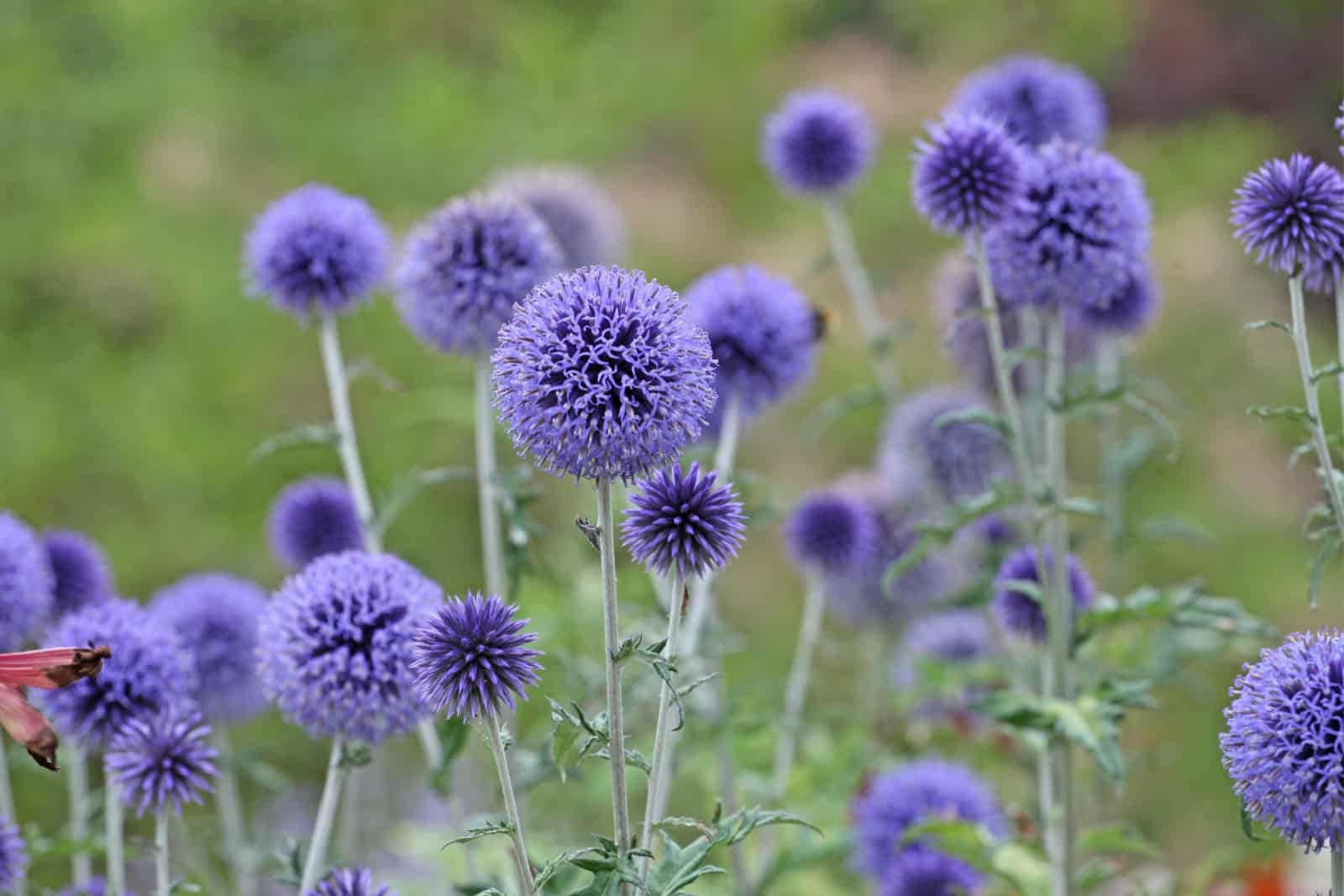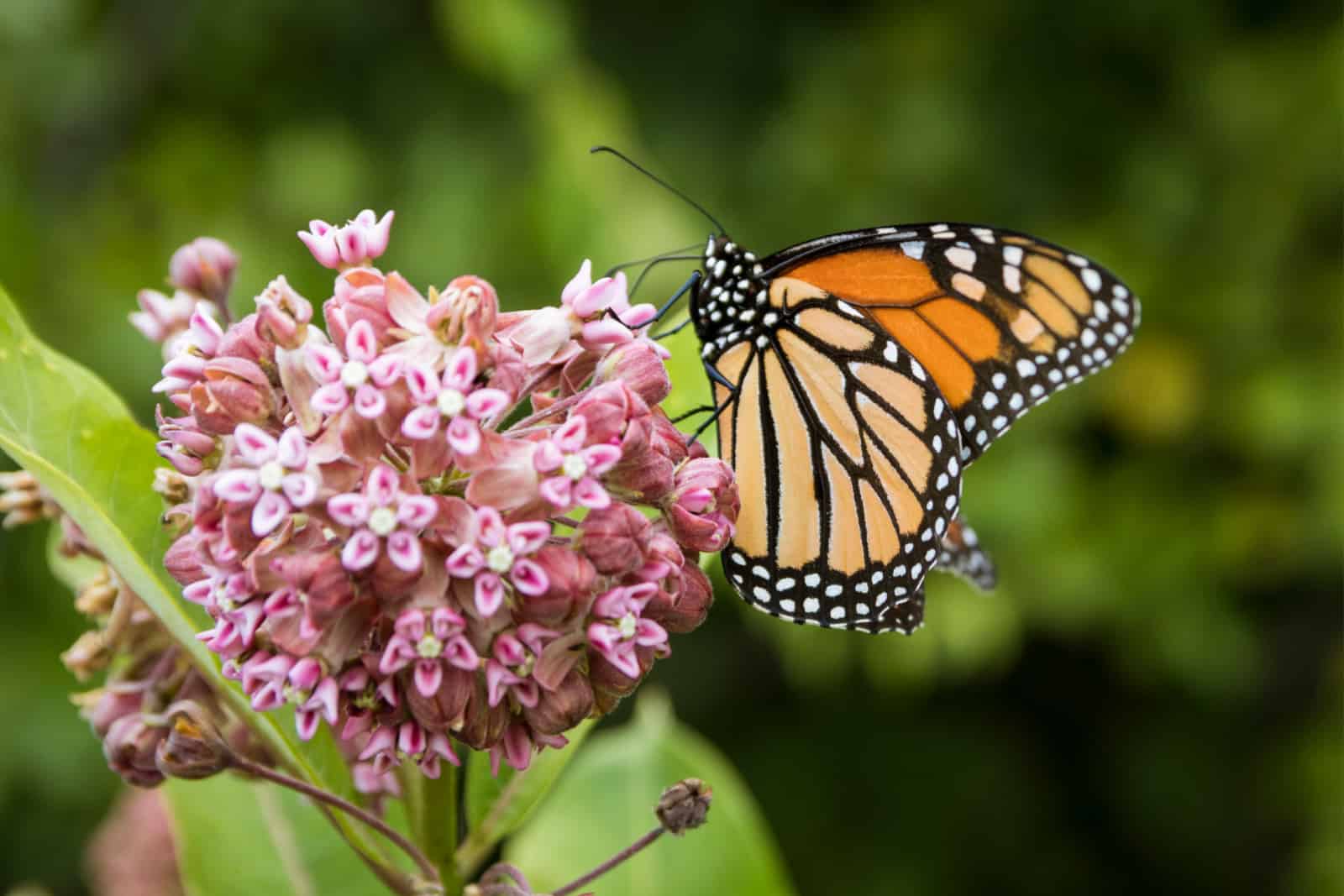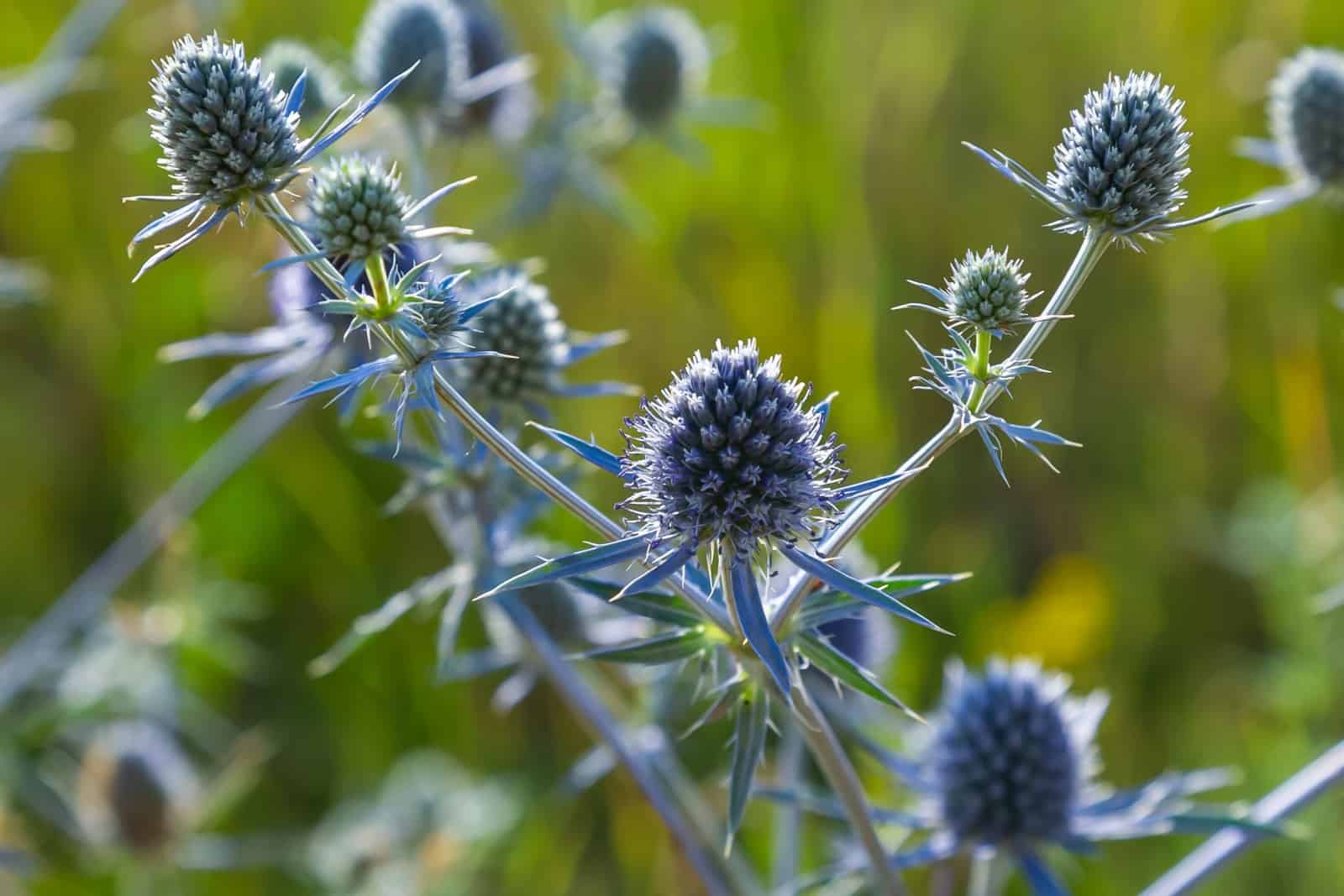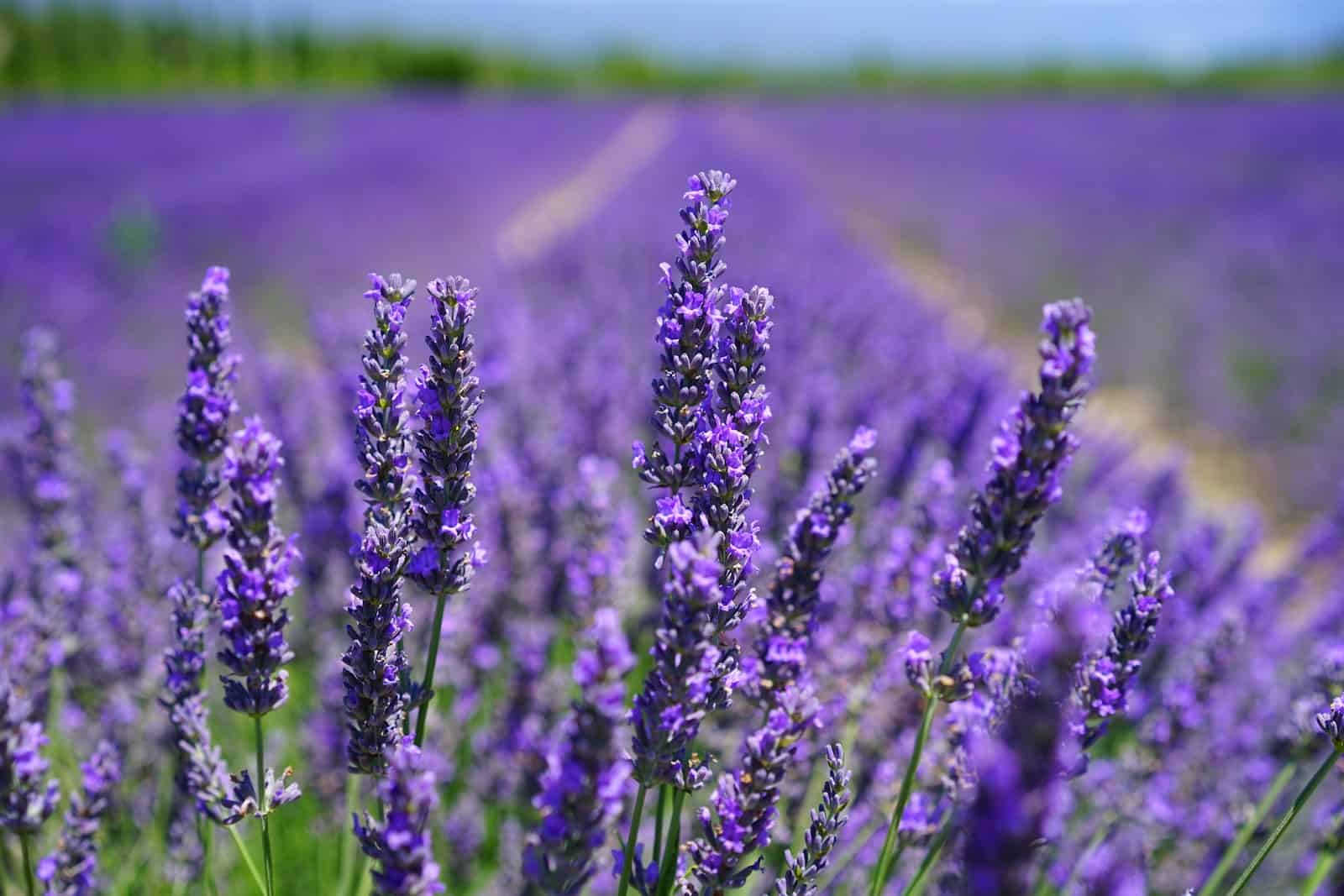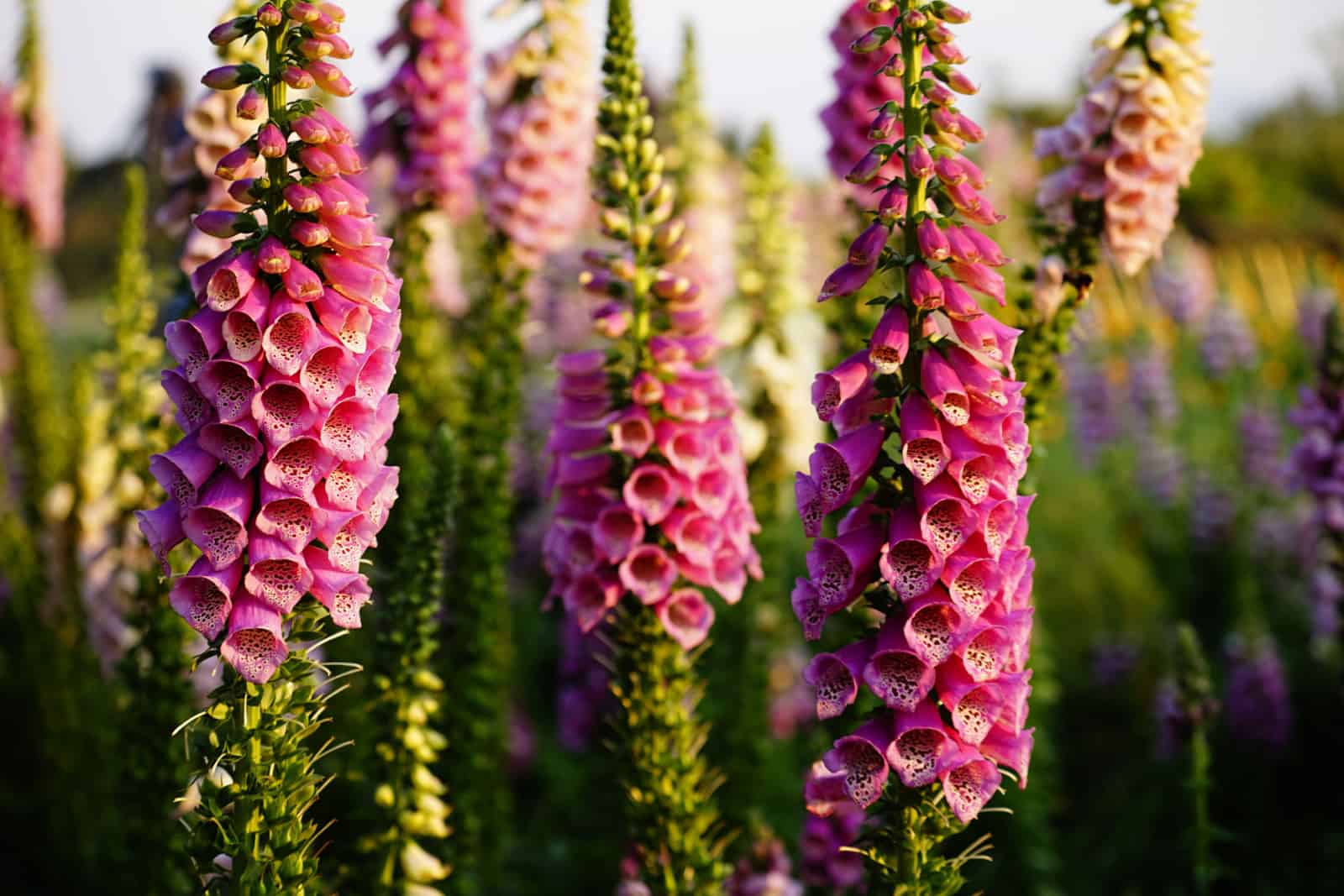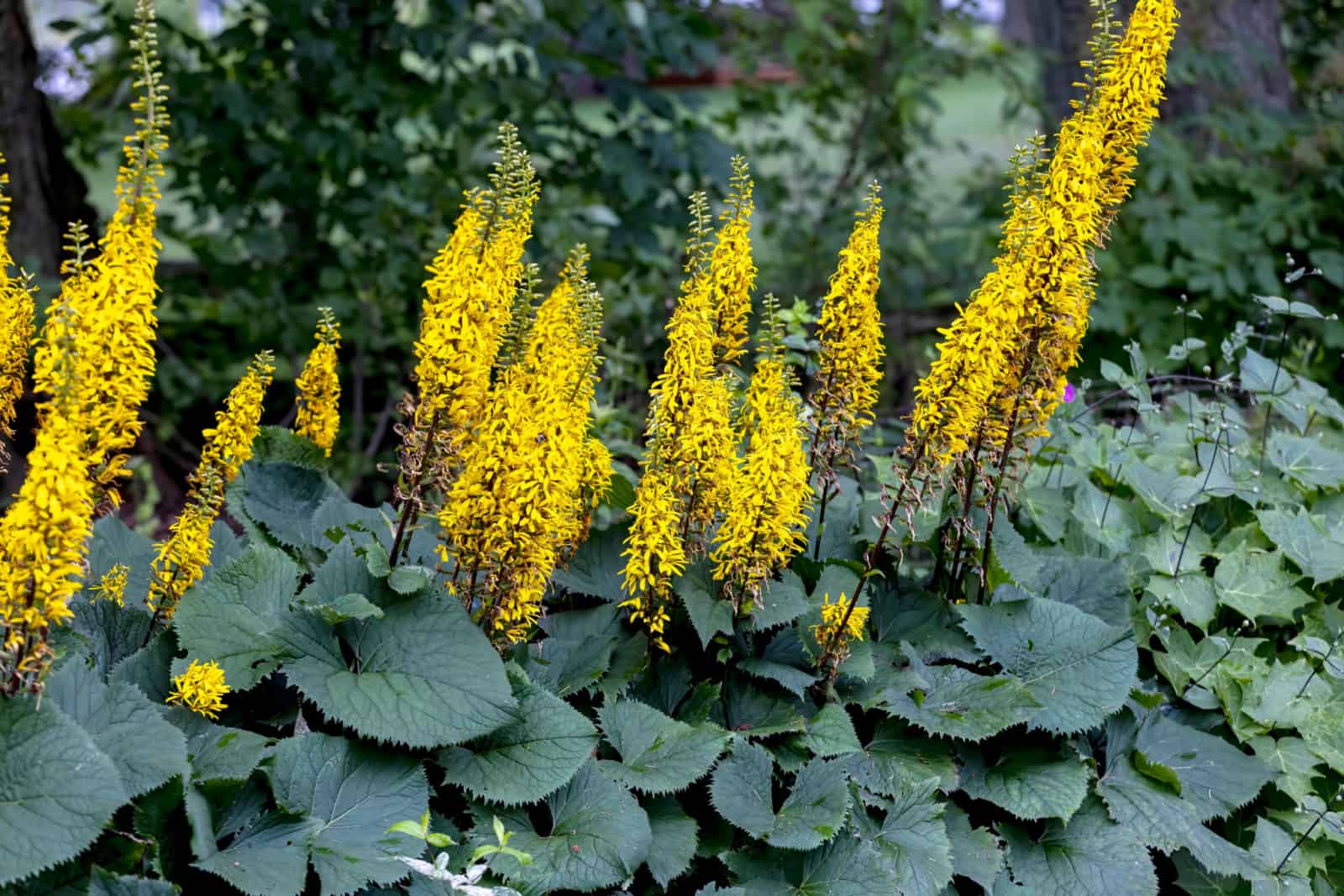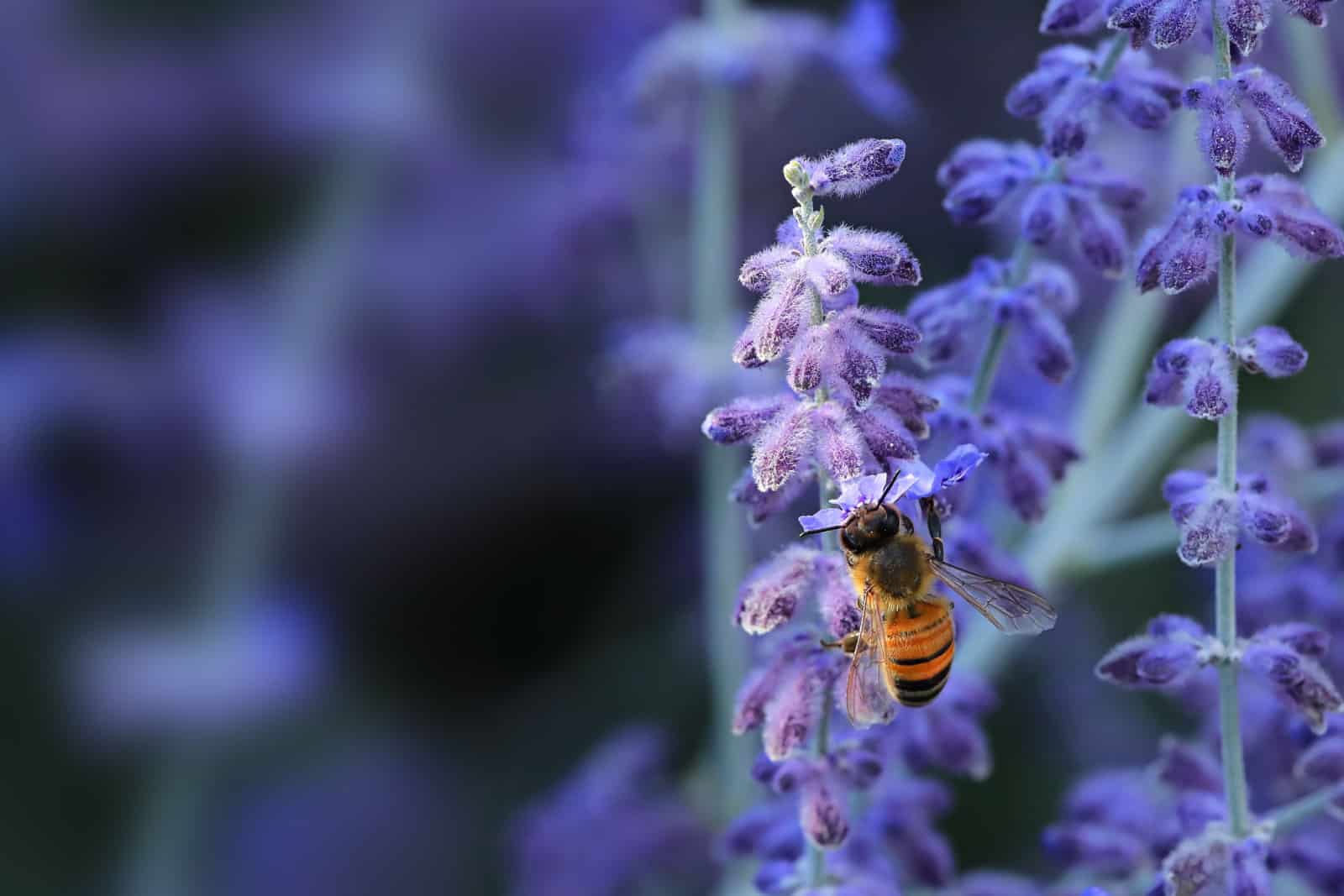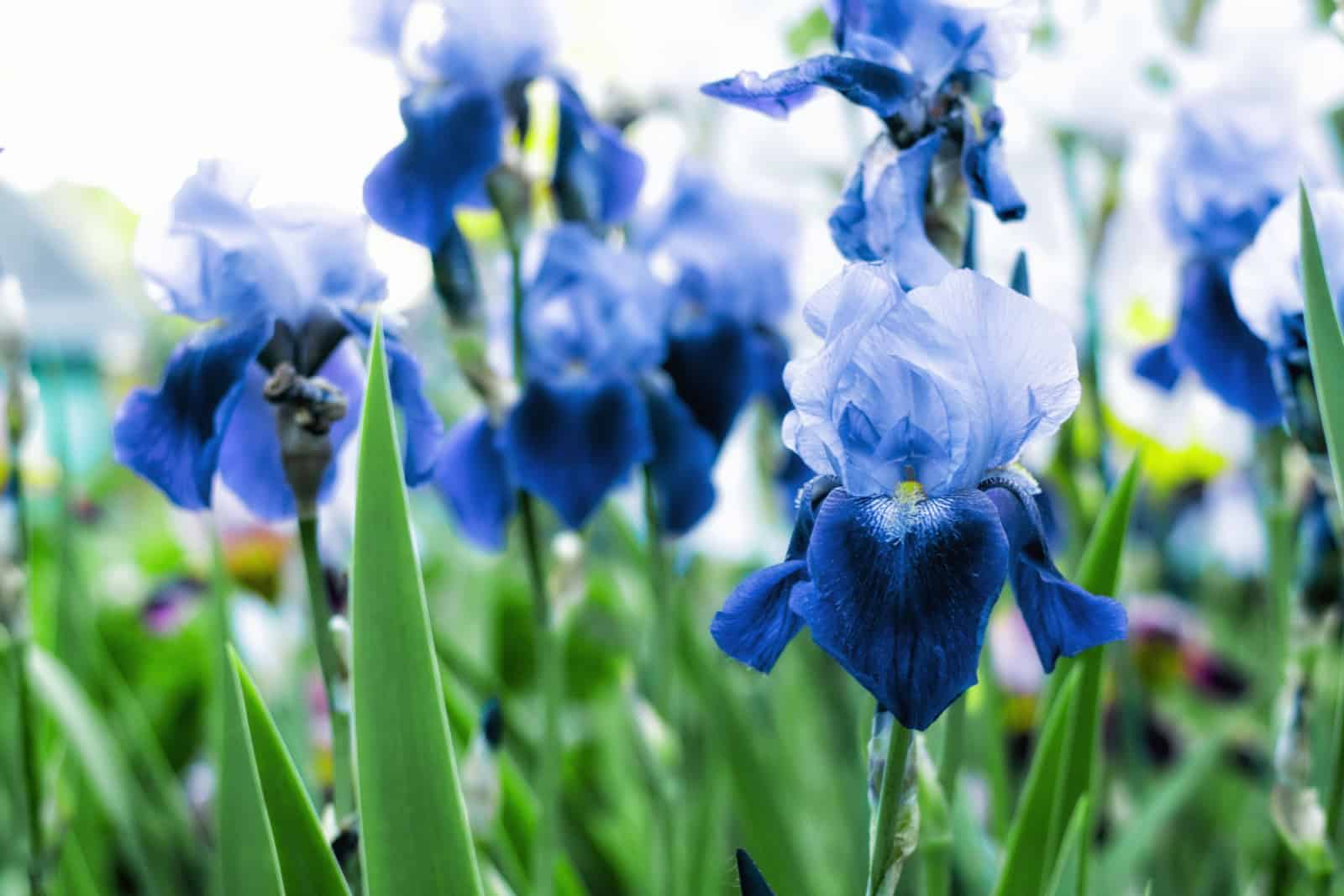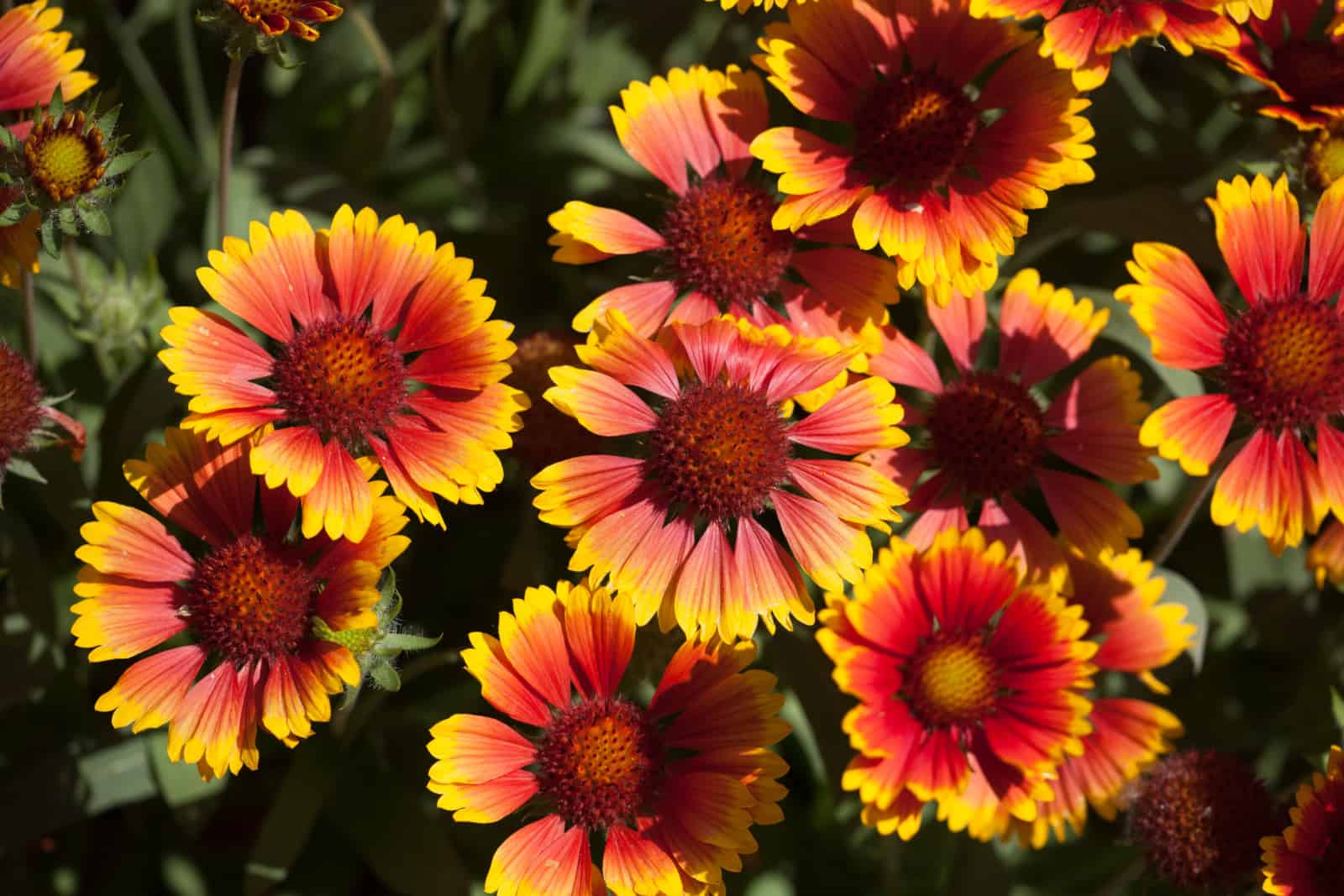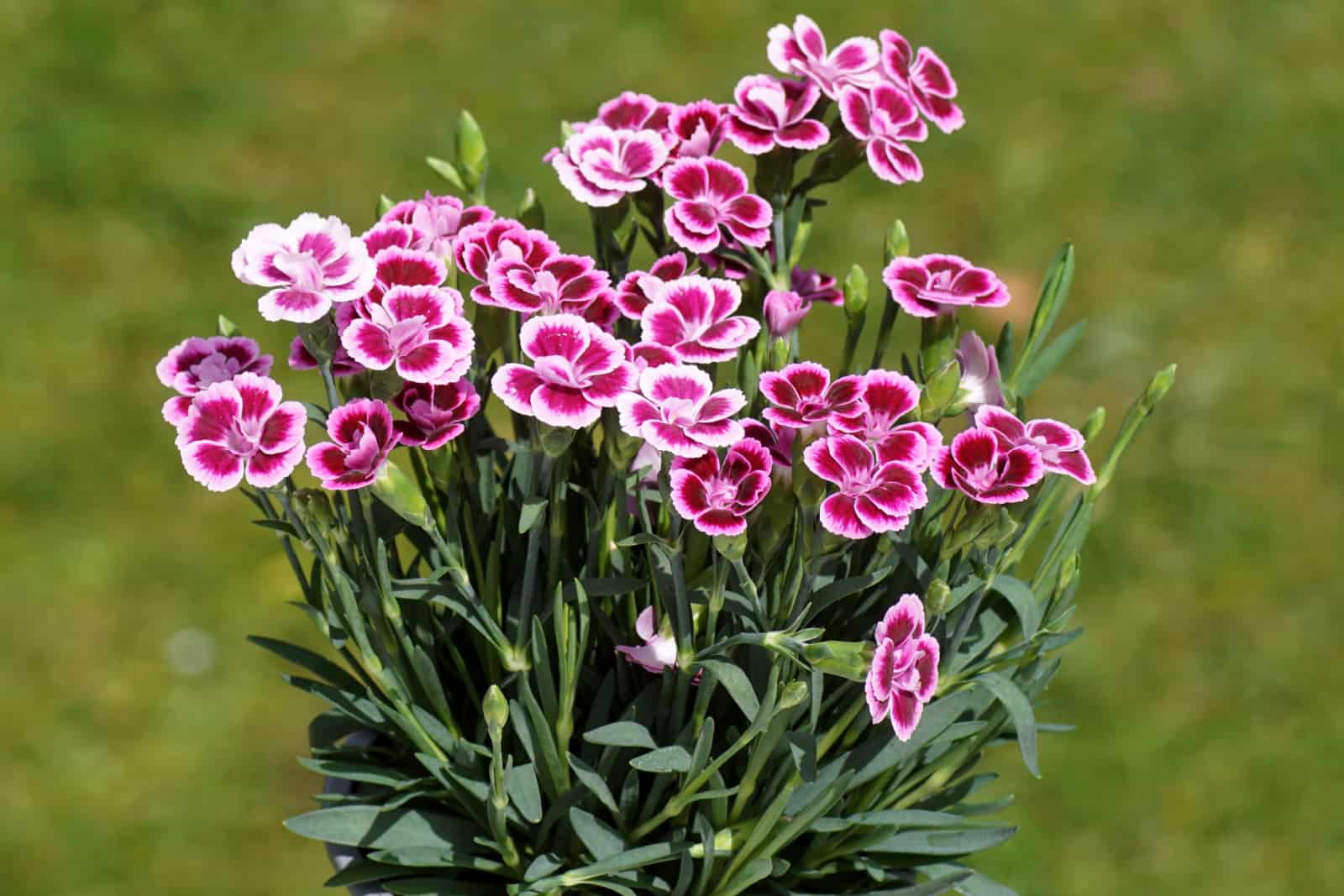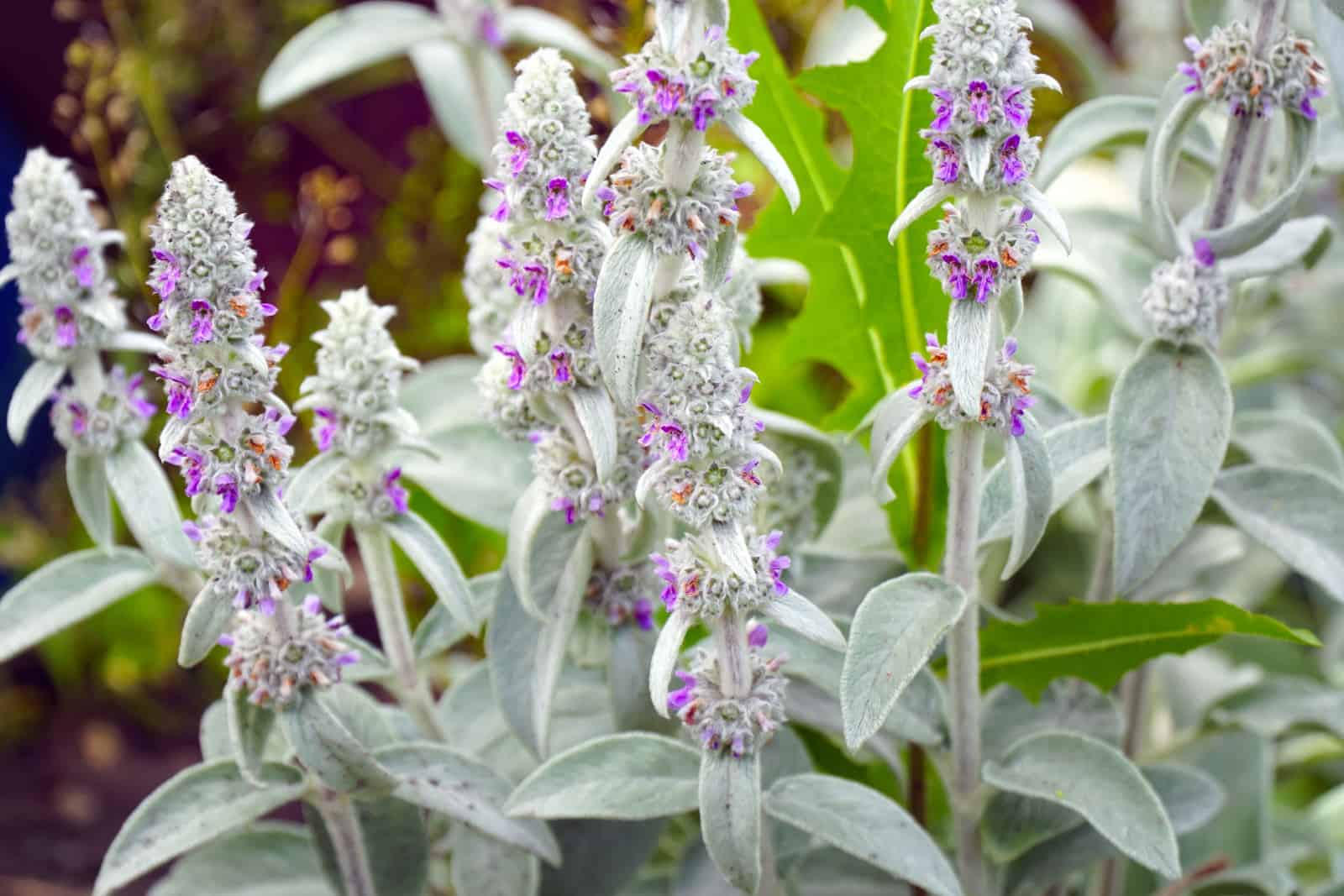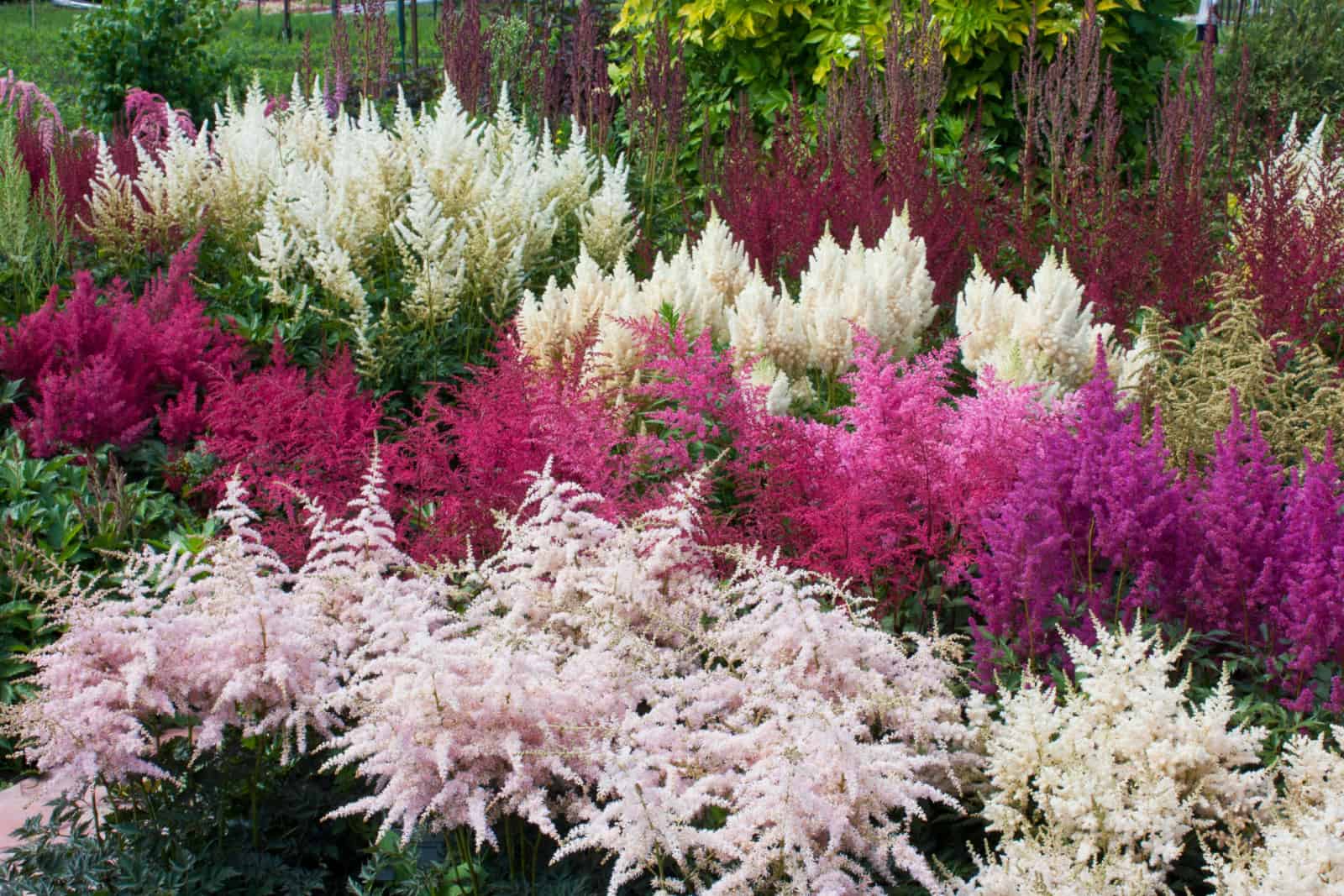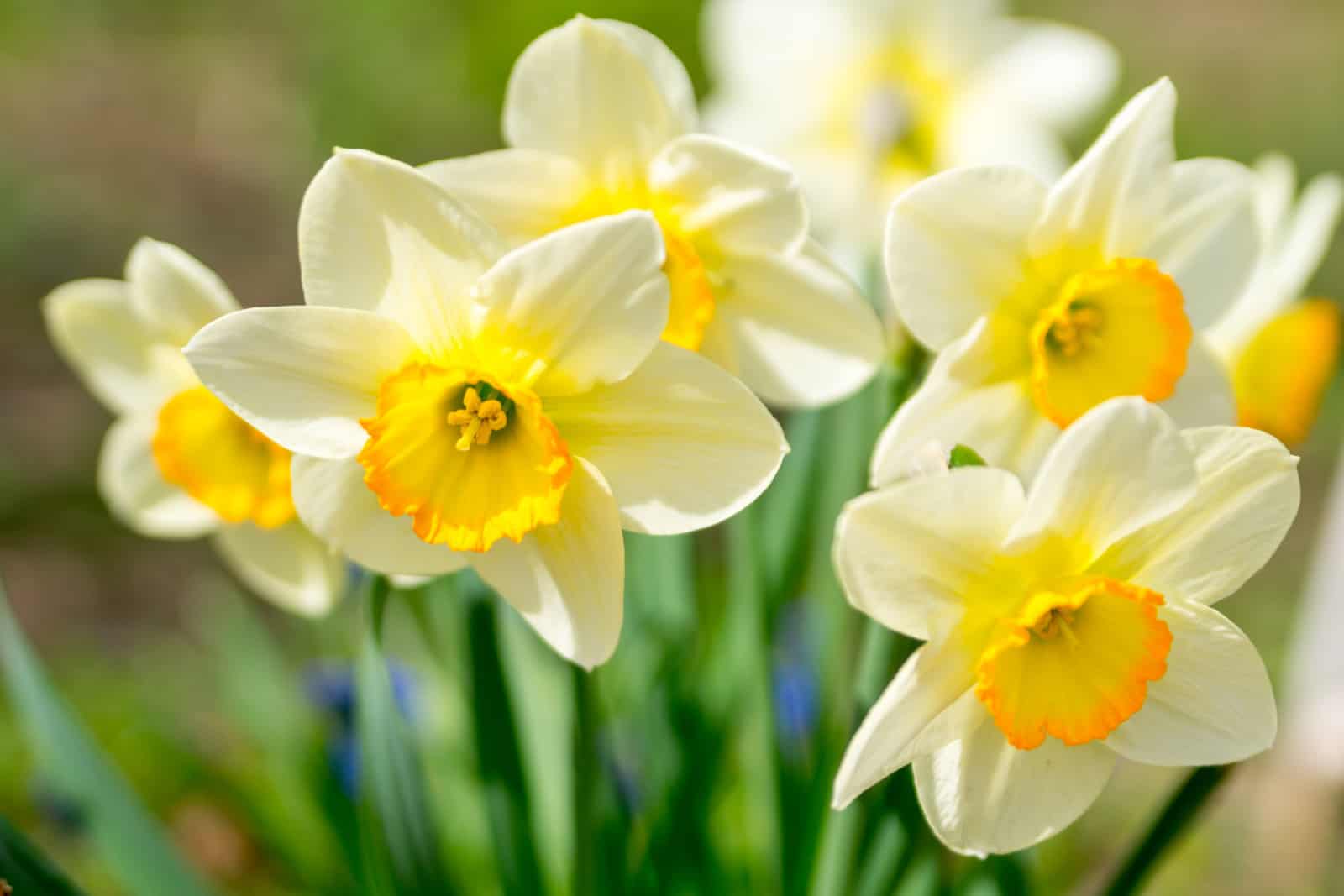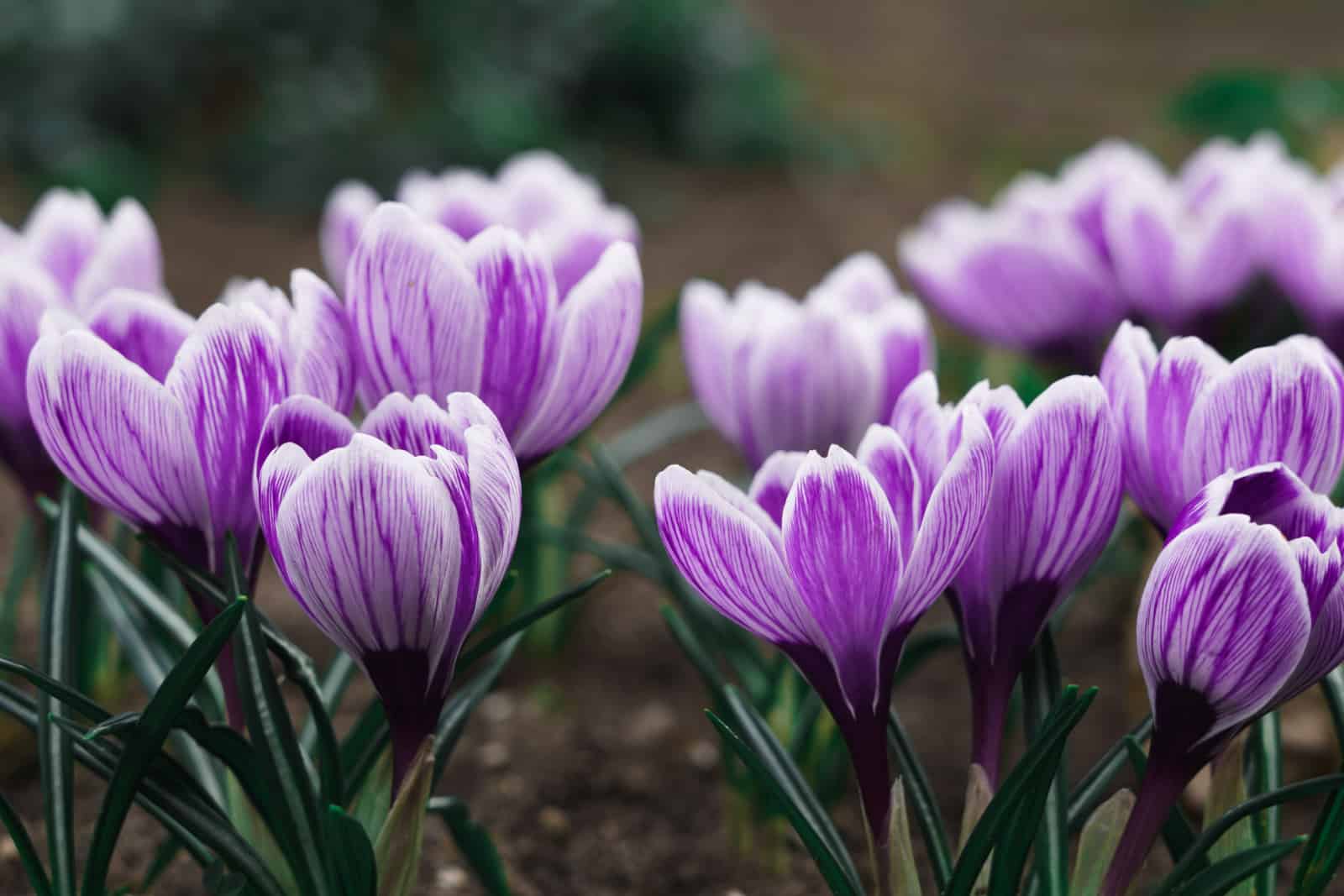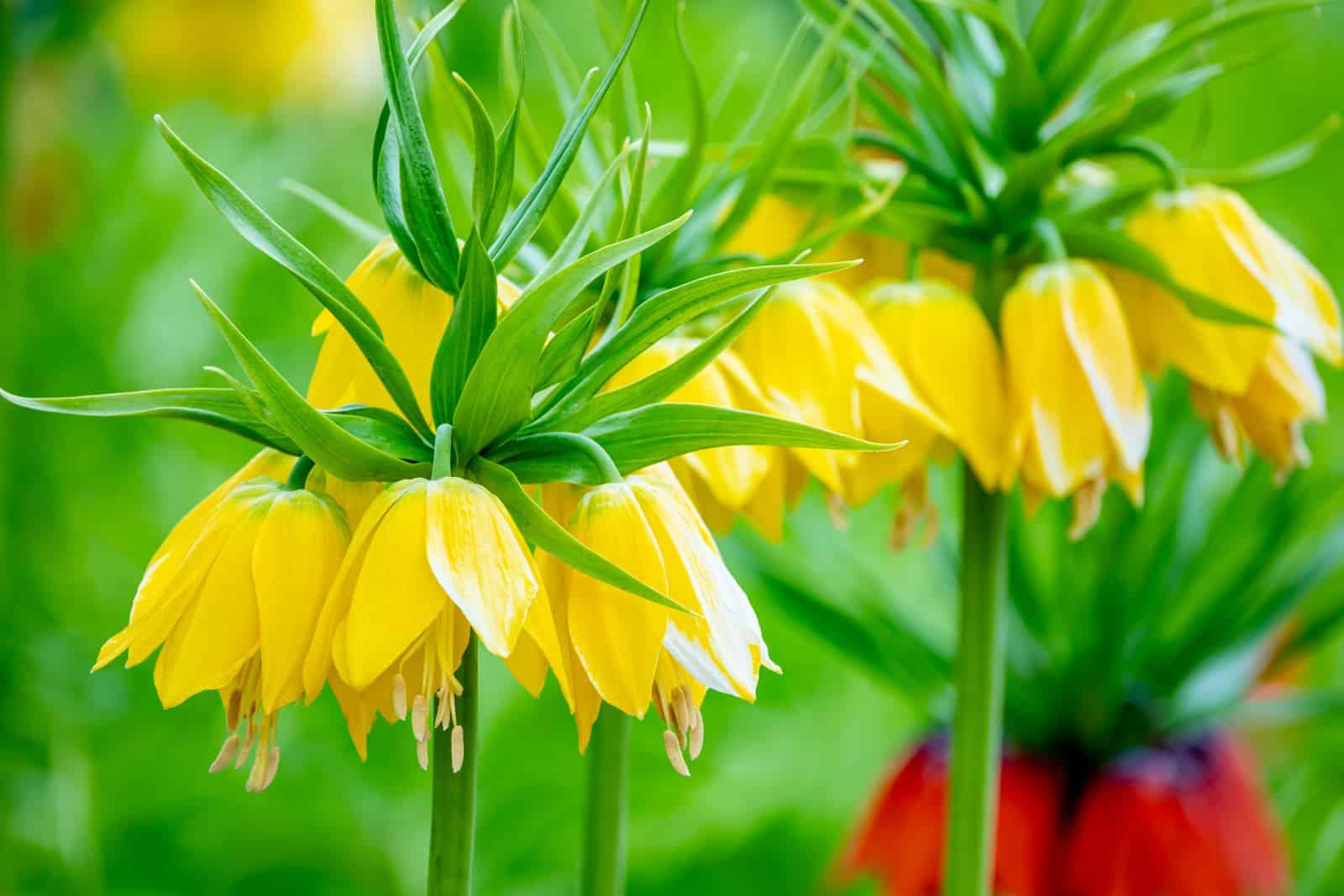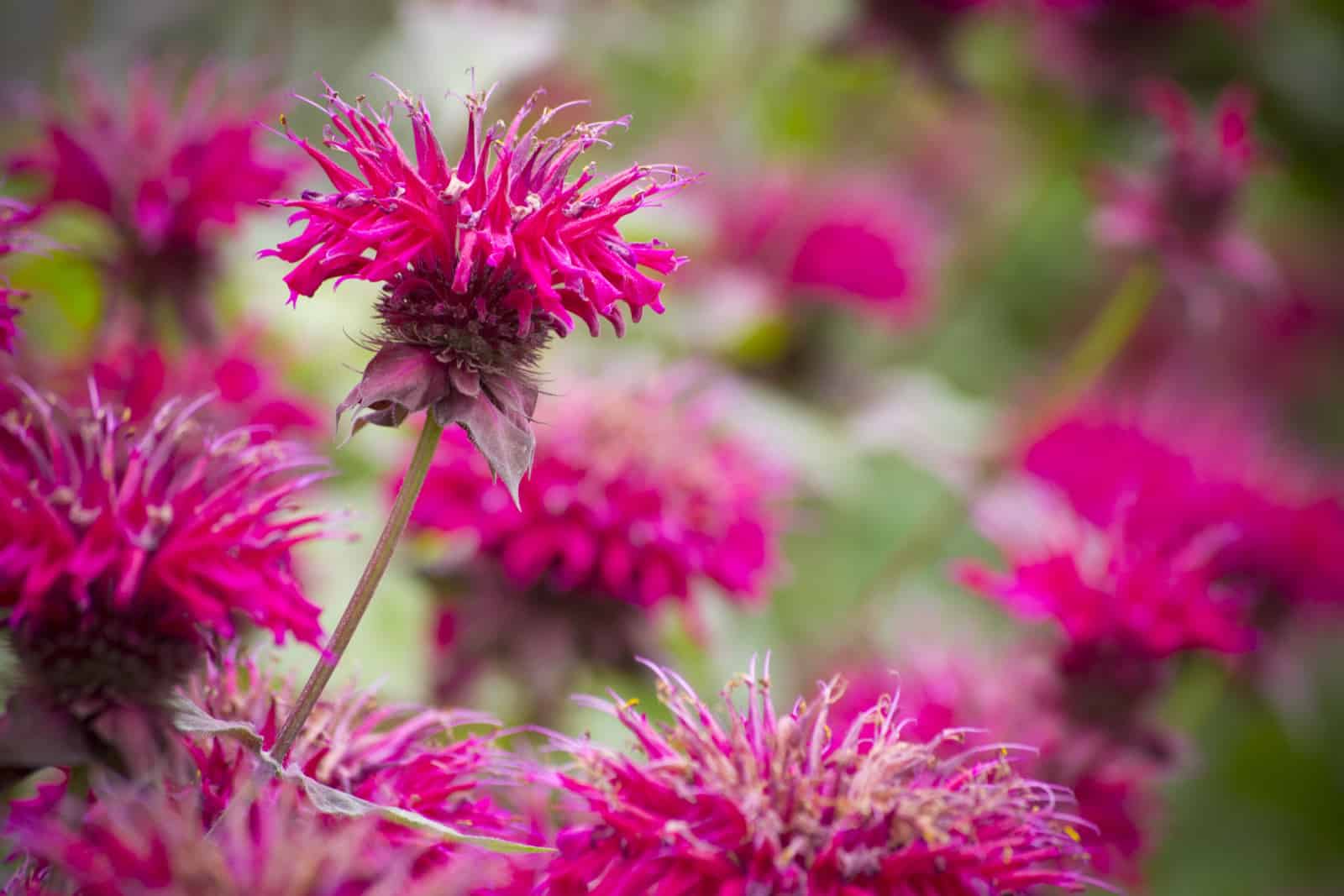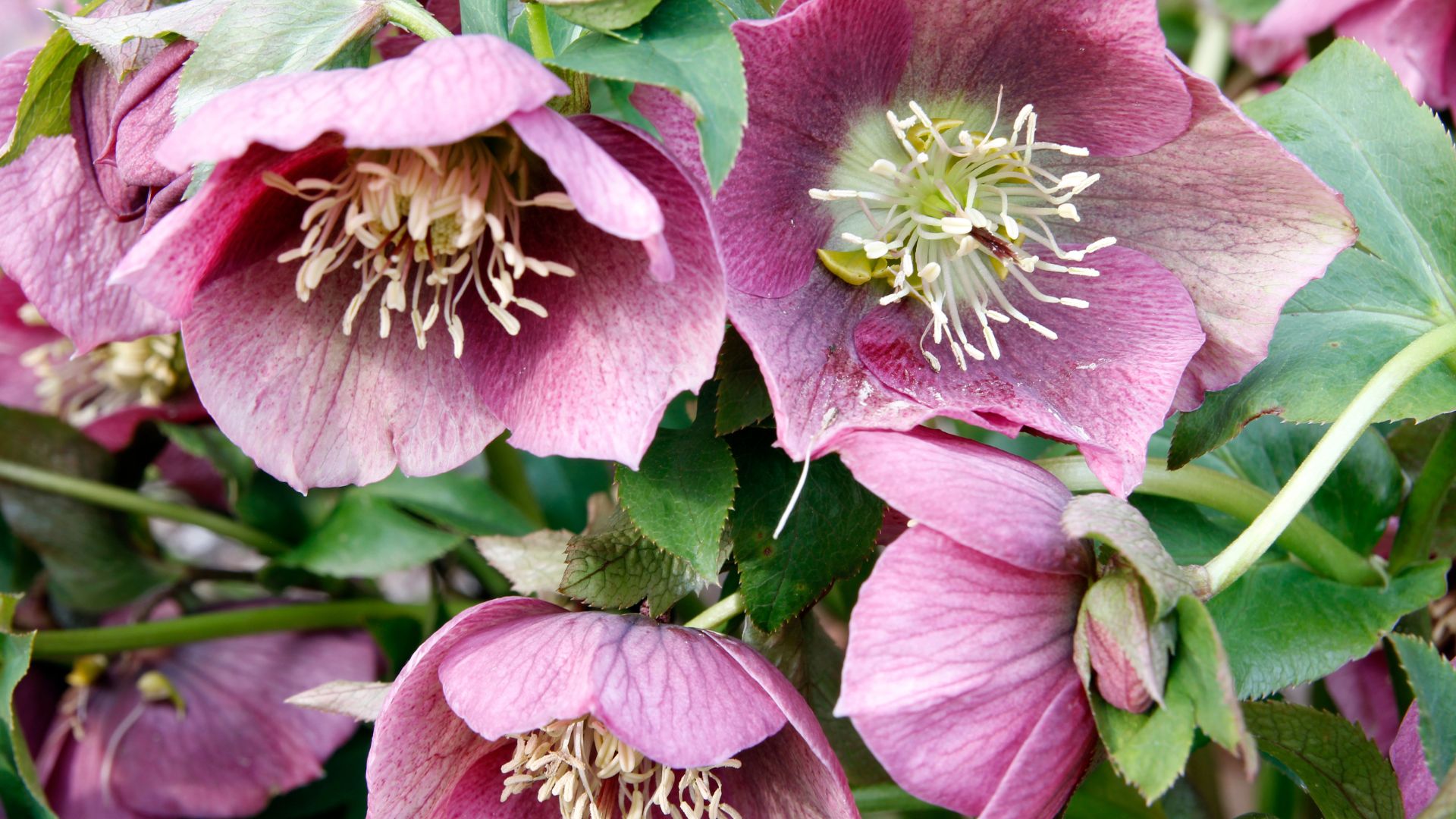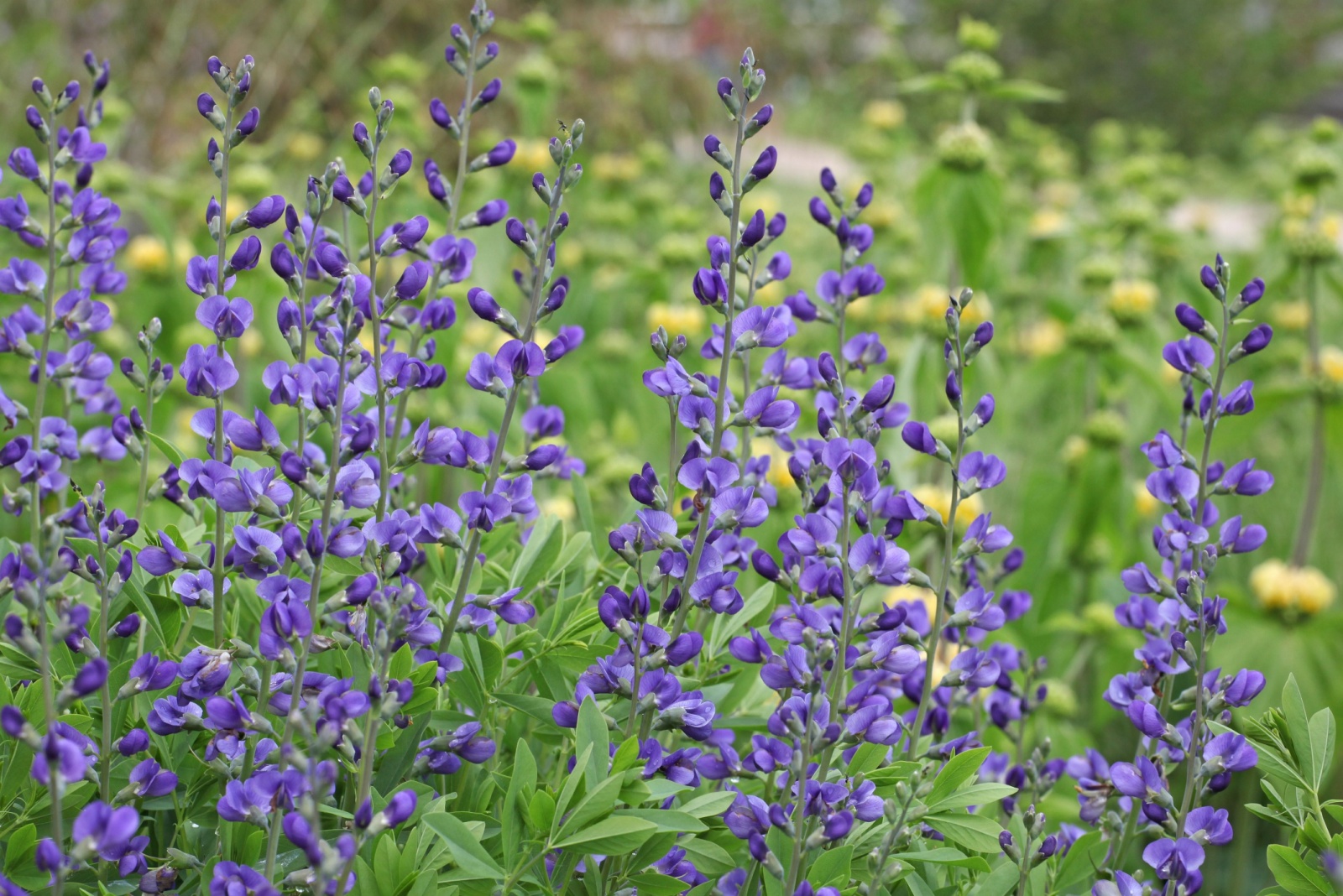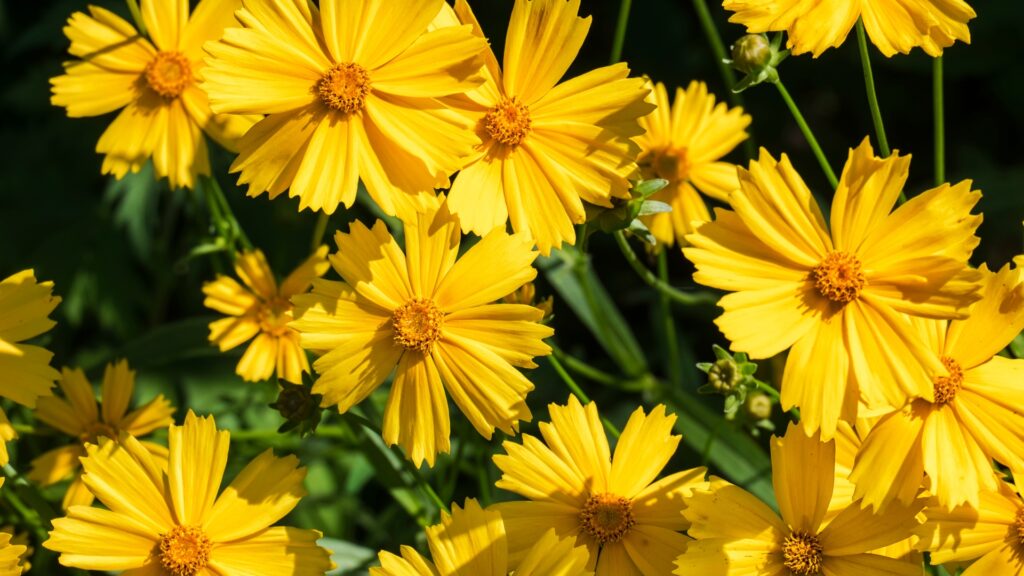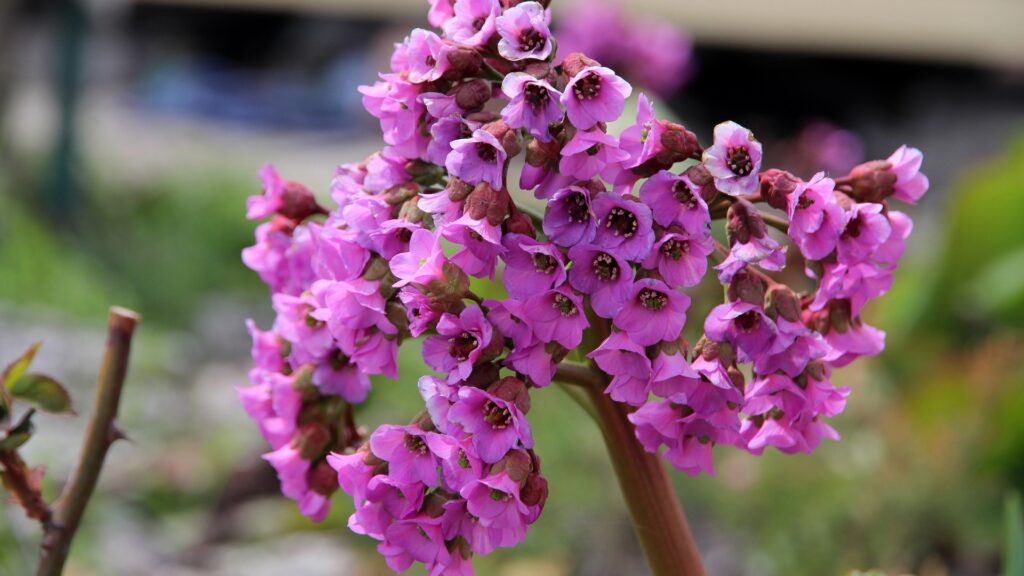Deer may look innocent, but they can turn your garden into a buffet in no time. Fences help, but these nimble grazers often leap right in and feast.
The good news? Some plants naturally say “hands off.” These deer-resistant perennials add beauty and color—without becoming lunch.
Plant a few, and let your garden stand its ground.
1. Daylily (Hemerocallis)
With their trumpet-shaped flowers that come in a variety of colors, including pink, orange, red, and purple, daylilies are considered as one of the finest colorful flowers for gardens.
However, there is another reason why these flowering plants are adored by many gardeners – their tough and fibrous leaves are unappealing to deer.
Daylilies are hardy, drought tolerant plants that grow best in USDA hardiness zones 3 through 10. These plants can thrive in both full sun and partial shade, and prefer growing in well-draining and nutrient rich soil.
This is why fertilization is required during the growing season. You can also deadhead spent flowers to encourage more blooms.
2. Garden Phlox (Phlox paniculata)
Garden phlox, otherwise known as Phlox paniculata, is a beautiful herbaceous plant often grown as a ground cover. It is known for its characteristic clusters of pink and white flowers that have a mesmerizing fragrance.
Pollinators absolutely love these fragrant flowers, so your garden will be filled with busy bees and butterflies during the blooming period.
On the other hand, deer despise the smell and will want to stay far away from these lovely blooms. They also don’t enjoy munching on those rough, hairy leaves.
Garden phlox grows best in hardiness zones 4 through 8. This herb can grow in all sorts of soils, but thrives in a well-draining one. It can grow in full sun and partial shade. Fertilization will encourage more blooms.
3. Globe Thistle (Echinops)
The globe thistle is a striking perennial plant with round, blue to grayish flowers that grow on tall and sturdy stems. This drought tolerant plant is great for rock gardens, beds and borders, cottage gardens, etc.
It produces flowers in mid to late summer, and they are excellent for attracting various pollinators. Globe thistles also produce spiny leaves and fibrous stems that deer don’t like very much.
This plant grows best in hardiness zones 3 through 9, prefers full sun and well-draining soil, and requires little to no fertilization.
4. Yarrow (Achillea)
Yarrow is a low-growing herbaceous perennial plant with fern-like leaves and clusters of tiny flowers. These flowers vary in color between pink, white, red, and yellow.
Yarrow’s strong and unique fragrance can attract pollinators and deter deer at the same time. Their taste is also too bitter for deer.
This low maintenance plant is drought tolerant and can grow in full sun, which makes it a perfect plant for ground covers. Yarrow grows best in hardiness zones 2 through 9.
5. Coneflower (Echinacea)
Coneflowers are tough perennial plants that produce clusters of daisy-like flowers in shades of pink, yellow, white, and purple. They appear during summer and attract plenty of pollinators.
Coneflowers are generally deer resistant due to their tough, hairy leaves and unappealing taste.
They thrive in zones 3 to 8. Coneflowers can grow in full sun and partial shade. They prefer well-draining soil that is slightly acidic. Once established, they don’t require much fertilizer or water.
6. Red Hot Poker (Kniphofia)
The red hot poker is a unique perennial plant with tall spikes of orange, yellow, and red brush-like flowers. They combine perfectly with the lance-shaped foliage.
If you plan to grow Kniphofia in your garden, get ready for butterflies and hummingbirds flying all around it!
You won’t have to worry about deer visiting your garden because they don’t find the vibrant flowers and foliage appealing.
The red hot poker grows well in zones 5 to 9. It thrives in full sun and well-draining soil. Regular watering is required, just make sure you let the soil dry out before watering again.
7. Lupins (Lupinus)
Lupins are herbaceous perennial plants that produce segmented palmate leaves with tall spikes of pea-like flowers in shades of pink, purple, blue, and white. Some flowers are even bicolor!
Their fuzzy texture and bitter taste deter deer from your garden. The plant is even toxic if ingested in large quantities.
Lupins thrive in USDA hardiness zones 4 through 8. These herbaceous plants grow well in full sun and well-draining soil. They also need consistently moist soil, so make sure to provide them with one inch of water per week.
8. Bleeding Hearts (Lamprocapnos spectabilis)
Here is yet another herbaceous perennial plant that is great for repelling deer from your fruits and veggies. Native to Asia, the bleeding heart is known for its finely divided foliage and heart-shaped flowers.
This herb contains compounds that make them unappetizing to deer. The plant’s delicate foliage and flowers also make it difficult for deer to feed on.
Bleeding hearts plants can grow in zones 3 to 9 and prefer nutrient-rich, well-draining soil. To keep the soil moist, water regularly and add a layer of mulch.
Foliage can be cut back after flowering to encourage new growth. These plants are perfect for shady gardens since they thrive in partial shade.
9. Columbine (Aquilegia)
Columbine, otherwise known as Aquilegia, is a perennial herb native to North America. It produces lacy foliage and nodding pink, purple, blue, or white flowers with distinctive spurs.
It contains toxins that are harmful to deer when ingested. The plant’s bitter taste and toxicity make it unappealing to deer.
Columbine prefers partial shade and moist, well-draining soil. It is drought tolerant, but it still requires regular watering during hot summer days. Grows best in USDA hardiness zones 3 to 9.
10. Goatsbeard (Aruncus)
This is a bushy and clump forming perennial plant that produces fern-like leaves and fluffy plumes of tiny, white or cream-colored flowers.
This herb has a bitter taste and a tough texture, two things that deer don’t really like.
Goatsbeard can grow in both full sun and partial shade. It grows best in zones 3 through 9. Regular watering is required, especially during dry periods.
11. Oriental Poppy (Papaver orientale)
The Oriental poppy, otherwise known as Papaver orientale, is a show-stopping perennial plant that produces large paper flowers in red, pink, orange, and white. They grow on tall stems surrounded by deeply divided foliage.
These flowers are usually used as cut flowers to make beautiful bouquets and dried floral arrangements. They are also used for deterring deer due to their bitter sap and fuzzy texture.
These poppies thrive in zones 3 to 9 and prefer full sun and well-draining soil. Once established, they are drought tolerant but will benefit from watering from time to time.
12. Peony (Paeonia lactiflora)
Peonies are definitely one of the prettiest flowering plants out there!
They are beloved for their large, beautiful, fragrant flowers that appear in late spring to early summer. Their lush foliage adds texture and interest to the garden even when not in bloom.
These plants are ideal for borders since their tough leaves and somewhat bitter taste keep deer at bay.
The peony growing stages are relatively easy to handle. These plants can grow in zones 2 to 9. They are long-lived and can grow for decades in the same spot. Peonies prefer full sun to partial shade and grow best in well-draining soil.
After blooming, deadhead the spent flowers and allow the foliage to die back naturally. Add a layer of mulch in the fall to protect the roots during winter.
13. Veronica Speedwell (Veronica)
A perennial plant with many uses, the Veronica, commonly referred to as Speedwell, produces lovely spikes of pink or blue blooms. These summer-blooming flowers are excellent for attracting pollinators.
Pollinators might like these flowers, but deer not so much. They find them unappealing, which is why they won’t visit your garden if they spot Veronicas.
They spread rather quickly when growing in favorable conditions. Veronicas prefer full sun, but can tolerate some shade. When established, this plant is drought tolerant. It grows best in zones 3 through 8.
14. Monkshood (Aconitum)
Monkshood is considered a dramatic perennial due to its tall spikes of hooded flowers and glossy, palmate leaves. Even when they are not blooming, their deeply lobed foliage adds texture and interest to the garden.
These plants are highly toxic to deer and other animals, making them perfect for a short hedge or border plants.
Monkshood thrives in USDA hardiness zones 3 through 7. It prefers partial shade and moist, well-draining soil. The spent flower spikes should be cut and foliage pruned back after blooming.
15. Stonecrop (Sedum)
This is one of the rare succulents that’s used as a ground cover plant. Stonecrop is a drought tolerant plant that has unique succulent leaves and plenty of clusters of star-shaped flowers in pink, red, and white.
Besides growing it as a ground cover, sedum is frequently grown in rock gardens, containers, and borders (especially since deer don’t like munching on their tough leaves).
These hardy plants grow best in zones 3 through 10. These succulents like well-draining, sandy soils and full sun exposure.
16. Globe Thistle (Echinops)
The globe thistle, also known as Echinops, is a unique perennial plant that produces spiky blue and white flowers during late summer. It can grow to be 2 to 5 feet tall. These flowers are excellent for attracting bees and butterflies.
Deer don’t actually enjoy their foliage, and they also have a hard time navigating through the tall spiky flowers.
Globe thistles grow well in zones 3 through 9. These plants don’t require much water and they can adapt to various soil types. However, they require full sun in order to grow and spread.
17. Milkweed (Asclepias)
Milkweed is a lovely perennial plant that produces clusters of pink, orange, or white flowers.
This is plant attracts butterflies and hummingbirds, especially Monarch butterflies, which is why these plants are also referred to as butterfly weeds. Even though they do an excellent job attracting butterflies, they are just as great at deterring deer.
Milkweed has a milky sap that is toxic to many animals, including deer. Additionally, the rough and hairy texture of the leaves makes them less appetizing to deer.
This perennial grows best in hardiness zones 4-9 and it blooms from June to August. It prefers full sun and well-draining soil. The plant is drought tolerant so you won’t have to worry much about watering.
18. Sea Holly (Eryngium)
Here is yet another unique and alluring perennial that is quite effective at repelling deer!
Sea holly has beautiful cone-like flowers with a metallic blue or silver color that appear during summer. The plant usually grows up to 3 feet tall, so it’s perfect for borders and rock gardens.
These plants have prickly foliage that deer dislike. In addition, their tall and spiky flowers can be confusing for deer when navigating around, so they would rather stay away from them.
The plant thrives in zones 5 through 9 and it prefers full sun exposure. It is drought tolerant, though it should be watered during hot, dry summer days.
19. Lavender (Lavandula)
You are probably already aware that lavender is beloved by many gardeners. This hardy plant is suitable for any garden and growing it comes with a lot of benefits.
Their fragrant flowers are great for deterring pests, attracting pollinators, making mesmerizing essential oils, and also for repelling critters like deer – they find the strong lavender scent quite unappealing.
If you were wondering how to grow lavender, all they need is full sun and well-draining soil rich in nutrients. They thrive in the USDA zones 5 through 9.
20. Foxglove (Digitalis Purpurea)
Wth their spiky flower stalks and vibrant bell-shaped flowers, these short-lived plants are ideal for any outdoor space. Foxglove usually produces flowers from late spring to early summer.
These plants are great for cottage gardens and woodland environments because they can attract bees and other pollinators. What’s also great is that they contain toxic compounds that deter deer.
If they start munching on foxgloves, it can cause them severe stomach pain, heart problems, or even death if consumed in large amounts.
When it comes to plant care, it’s actually quite easy to grow them; they need moist soil that is also well-draining. These plants thrive in both partial shade and full sun. Foxglove grows best in USDA hardiness zones 4 through 8.
21. Catnip (Nepeta cataria)
Catnip, otherwise called Nepeta cataria or catswort, is a perennial herbaceous plant that belongs to the mint family. It produces heart-shaped leaves along with aromatic purple and pink flowers.
These lovely flowers bloom from spring all the way to early fall. Catnip is great for borders, herb gardens, and rock gardens.
While your cats might adore catnip, deer won’t go near them. This herb contains a chemical compound called nepetalactone, which is a natural repellent to deer.
The plant grows best in zones 3 through 7. It can thrive in full sun and partial shade, as well as well-draining medium to dry soils.
22. Sage (Salvia)
Here is yet another aromatic herb that can keep deer at bay!
Sage is a perennial plant that produces gray-green leaves with a fuzzy texture. During the blooming period (from mid-summer to early fall), the plant exhibits spikes of blue, pink, white, or purple flowers.
They have a strong and pungent fragrance that deer simply cannot stand.
Sage is hardy in zones 4 to 8, thrives in full sun and partial shade, and grows best in well-draining soil. Once established, it’s drought tolerant.
23. Ligularia
The Ligularia has beautiful, large, palmate leaves that have shiny surfaces. In addition to these leaves, daisy-like yellow flowers start blooming in mid to late summer, making the plant even more alluring!
This jungle-like plant contains compounds that are unappealing to deer.
It grows best in hardiness zones 4 through 9 and prefers partial to full shade along with moist and well-draining soil. Regular watering and mulching is recommended to maintain consistent moisture.
24. Russian Sage (Perovskia)
If you don’t want to grow lavender for some reason, then you should consider growing its doppelganger, Russian sage. Sometimes it can be quite hard to tell Russian sage and lavender apart because they both have similar flowers and textures.
However, Russian sage has lateral branches and somewhat more blue flowers compared to the lavender. They also start blooming in mid summer.
Another thing that they have in common is their resistance to deer. Russian sage also has a strong fragrance that deer don’t like.
The plant can grow perfectly in zones 4 to 9. It prefers sun and well-draining soil. It is drought-tolerant and requires little watering once established. Prune regularly to promote bushy growth.
25. Iris
Irises are beautiful perennial plants that produce colorful flowers ranging between white, pink, purple, and yellow. The sword-like leaves combine perfectly with the flowers, creating a breathtaking scene in the garden.
Besides making your garden look like a fairytale, these plants can also attract pollinators and keep deer away.
They grow best in zones 3 through 9. Irises thrive in full sun to partial shade. When it comes to soil requirements, they prefer a well-draining one. Regular watering and fertilization can encourage more blooms.
26. Blanket Flower (Gaillardia)
This is a fast-growing perennial that produces daisy-like flowers that bloom in bright shades of red, yellow, and orange from early summer to fall. These plants can reach up to 2 feet tall, making them perfect for borders and cottage gardens.
They are great for deterring deer since they contain compounds that are quite unappealing.
Blanket flowers thrive in zones 3 through 10. It is a drought tolerant plant that requires just a little watering once established. It grows best in full sun exposure when planted in well-draining soil.
27. Pinks (Dianthus)
Pinks, otherwise known as Dianthus or cheddar pinks, are low-growing perennials that produce aromatic, small pink, white, or red flowers. These plants grow between 6 to 36 inches tall.
The flowers have a strong and pungent fragrance that can keep deer away. This is why they are perfect for borders, though they can be grown as trailing plants as well.
Garden pinks grow well in zones 3 through 9 and thrive when planted in sunny locations. Once established, these plants require little to no watering.
28. Foamflower (Tiarella)
Foamflowers are shade-loving perennial plants that have delicate heart-shaped leaves and frothy white or pink flowers. They are great for making shady areas in the garden look more lively.
Deer stay away from foamflowers because they have a bitter taste, which is something that deer don’t enjoy.
Foamflowers can grow in zones 4 through 9. They require moist soil that’s rich in nutrients. Occasional watering and fertilization will lead to more bloom production. Don’t worry, these plants can even tolerate full shade!
29. Lamb’s Ear (Stachys byzantina)
The lamb’s ear is a soft perennial plant with gray to green leaves and purple flower spikes that can grow about 2 feet tall. These plants spread about 4-5 feet wide.
This plant is deer-resistant due to the texture and scent of its leaves.
They are hardy in zones 4 through 7. They grow best in full sun, although they can tolerate partial shade. These plants can also tolerate some dry soil. Occasional pruning required to keep a certain shape.
30. Astilbe
This is a striking plant known for its fluffy plumes of pink, white, or red flowers that appear in the summer. They combine well with the dark green and feathery foliage. They usually grow between 1 to 4 feet tall.
These plants have sturdy stems and texture on the leaves, both of which deer do not enjoy.
Astilbe is hardy in zones 3 through 8. It prefers full to partial shade and moist soil, and requires occasional watering and some fertilization.
31. Daffodils (Narcissus)
Daffodils are popular spring flowers that are quite easy to grow. They come in yellow, white, and orange, so they are real showstoppers!
They produce toxic bulbs so deer tend to avoid them.
These perennials are hardy in zones 3 to 8. They prefer full sun and partial shade, as well as well-draining soil. Some watering and fertilization will encourage more blooms.
32. Crocus
Here is yet another early-blooming plant that produces colorful flowers in the spring. Deer don’t like them because they produce toxic corms.
Crocus plants grow best in hardiness zones 3 to 8. They thrive in full sun and partial shade. Similarly to daffodils, some watering and fertilization will lead to more prolific plants.
33. Fritillaria (Fritillaria imperialis)
The Fritillaria is a unique bell-shaped flower that starts blooming in the spring. The colors vary between orange, red, and yellow. These flowers have a strong fragrance, which is something deer find unappealing.
These flowers thrive in zones 5 to 8. They can tolerate both full sun and partial shade. They can grow in various soil types, although they prefer well-draining soil.
34. Bee Balm (Monarda)
The bee balm is a colorful plant that is often grown in gardens to attract pollinators. They produce masses of vibrant blooms in red, crimson, white, or pink. Deer are not like pollinators and they can’t stand these strong fragrances.
This plant grows best in USDA hardiness zones 4 through 8. They are quite easy to take care of – they prefer full sun to partial shade, and some soil that drains well. Occasional watering required.
35. Hellebore (Helleborus)
Hellebores, also known as Lenten roses, bring early spring blooms in shades of white, pink, purple, and green. Their leathery, evergreen foliage adds interest to the garden year-round. These plants contain toxic compounds that make them unappetizing to deer.
Hellebores thrive in USDA zones 4 through 9 and prefer partial to full shade with moist, well-draining soil. Once established, they require minimal care and can tolerate dry conditions.
36. Baptisia (Baptisia australis)
Commonly known as false indigo, Baptisia is a hardy perennial with spires of deep blue, purple, yellow, or white flowers that bloom in late spring to early summer. The plant’s tough, fibrous stems and slightly toxic foliage keep deer at bay.
Baptisia grows well in zones 3 through 9 and thrives in full sun with well-draining soil. This drought-tolerant plant requires little maintenance, making it a great choice for borders or cottage gardens.
37. Coreopsis
Coreopsis, often called tickseed, is a cheerful perennial known for its bright daisy-like flowers that come in shades of yellow, red, orange, and pink. These long-blooming plants bring vibrant color to the garden from early summer well into fall.
While pollinators like bees and butterflies are drawn to Coreopsis, deer tend to steer clear. The plant’s tough, narrow leaves and slightly bitter taste make it unappealing to them.
Coreopsis thrives in USDA hardiness zones 4 through 9. It prefers full sun and well-draining soil, making it ideal for borders, wildflower gardens, and containers. Once established, it is drought tolerant and requires little maintenance aside from deadheading to encourage more blooms.
38. Bergenia (Bergenia cordifolia)
Bergenia, commonly known as Elephant’s Ears due to its large, glossy leaves, is a clump-forming perennial that produces clusters of pink, magenta, or white flowers in early spring. These blooms rise above the foliage on sturdy stalks, adding a burst of color when many other plants are still waking up.
The thick, leathery leaves of Bergenia have a bitter taste and tough texture, making them unpalatable to deer. Even in winter, the evergreen foliage adds visual interest and acts as a natural deterrent to hungry critters.
This hardy plant thrives in USDA zones 3 through 8. It prefers partial shade but can tolerate full sun in cooler climates. Bergenia does best in moist, well-draining soil rich in organic matter. Water regularly during dry spells, and remove spent flower stalks to keep the plant looking tidy.
I hope you found this article helpful.
Until next time!

